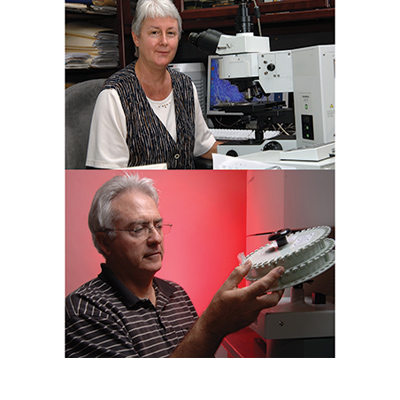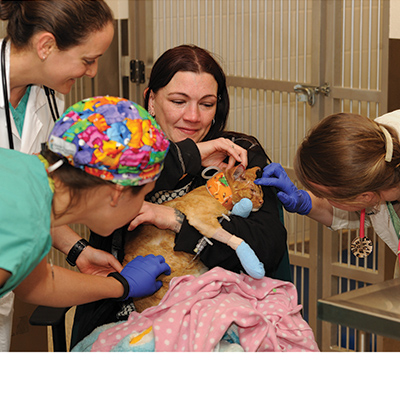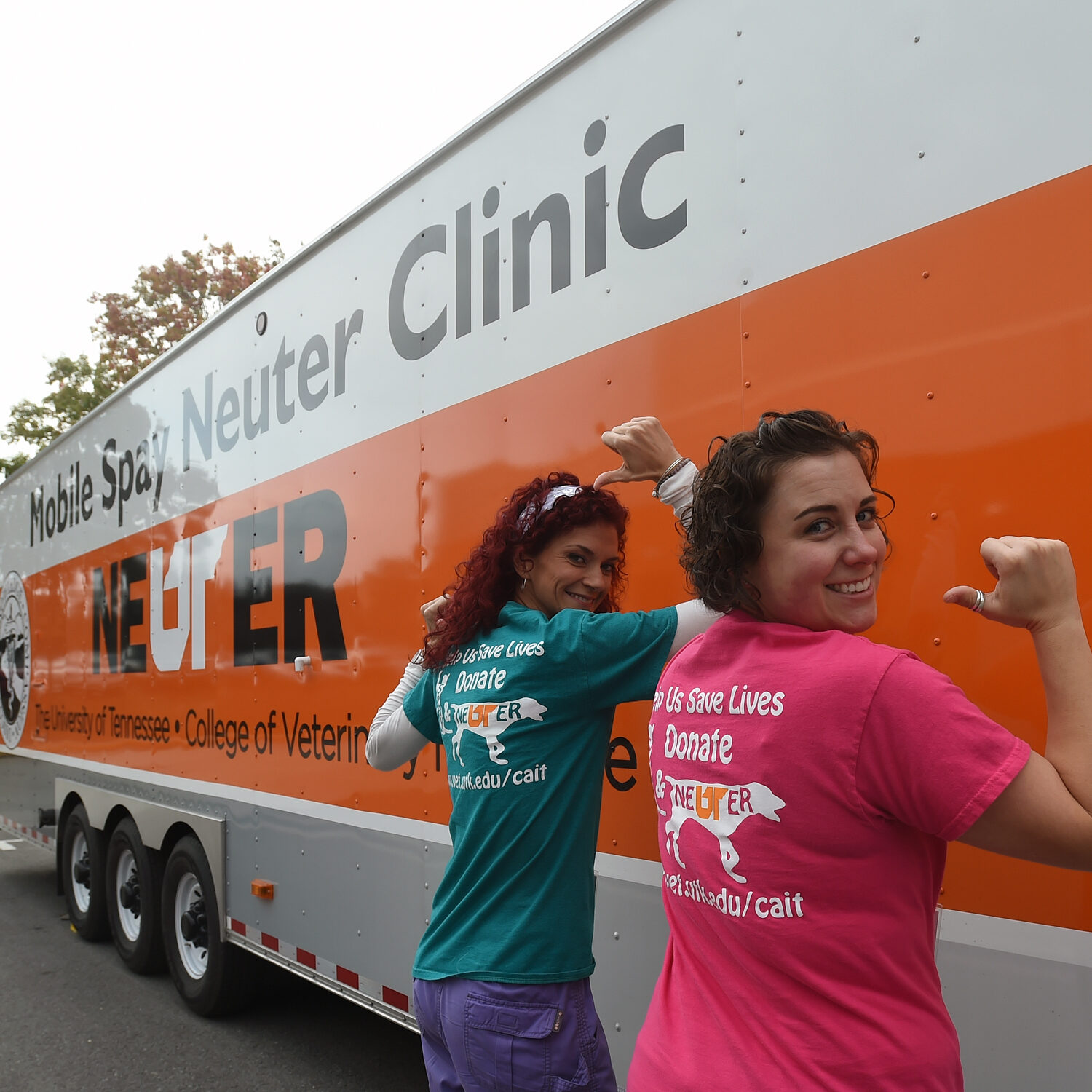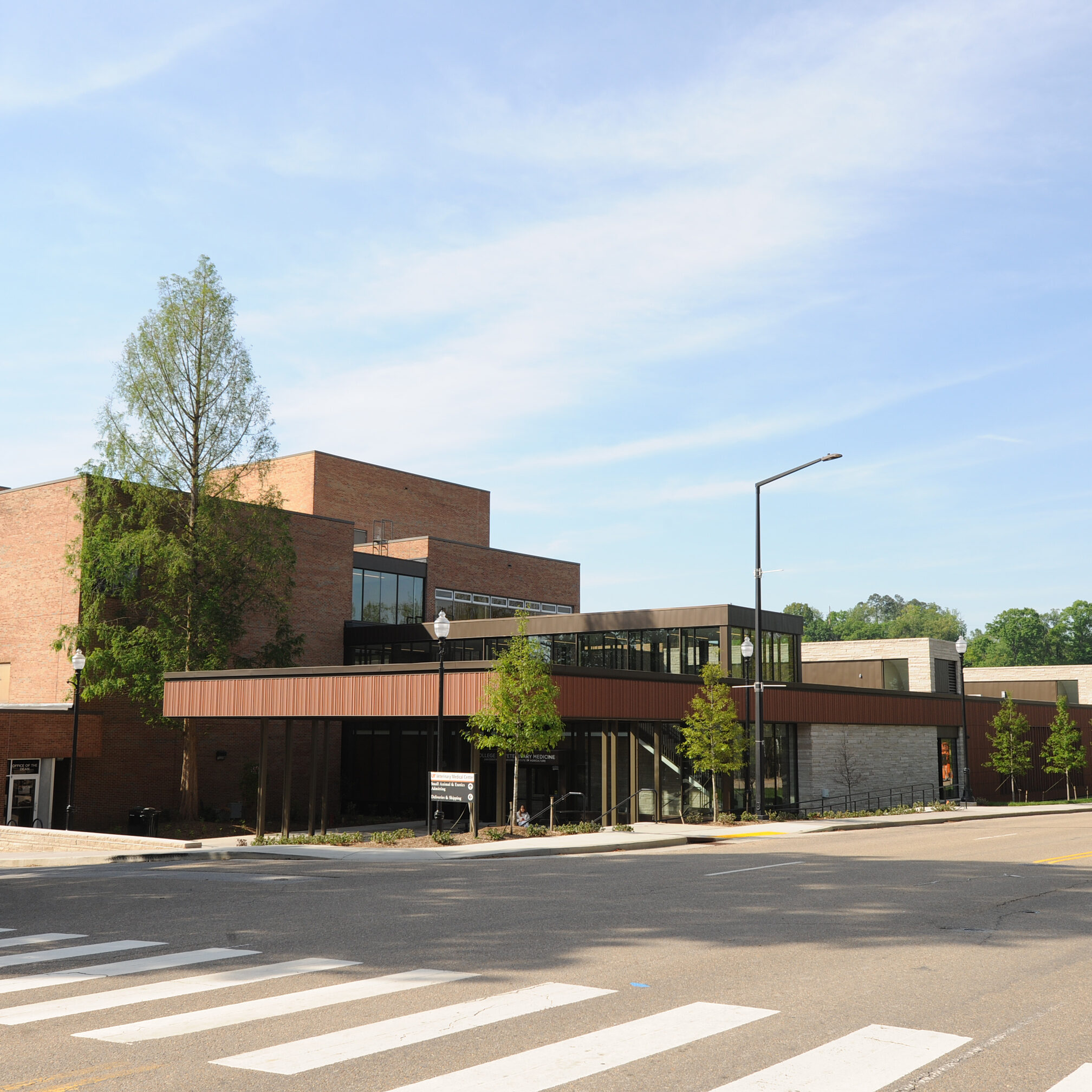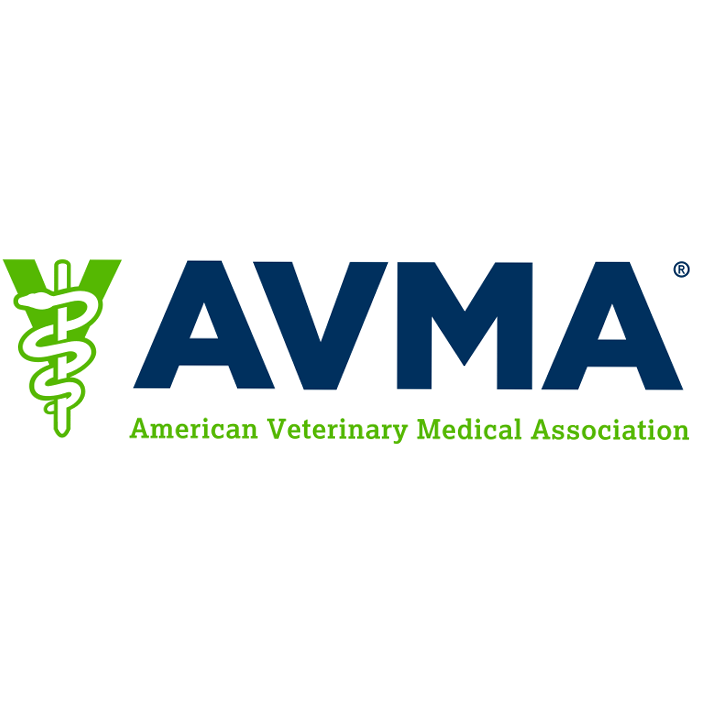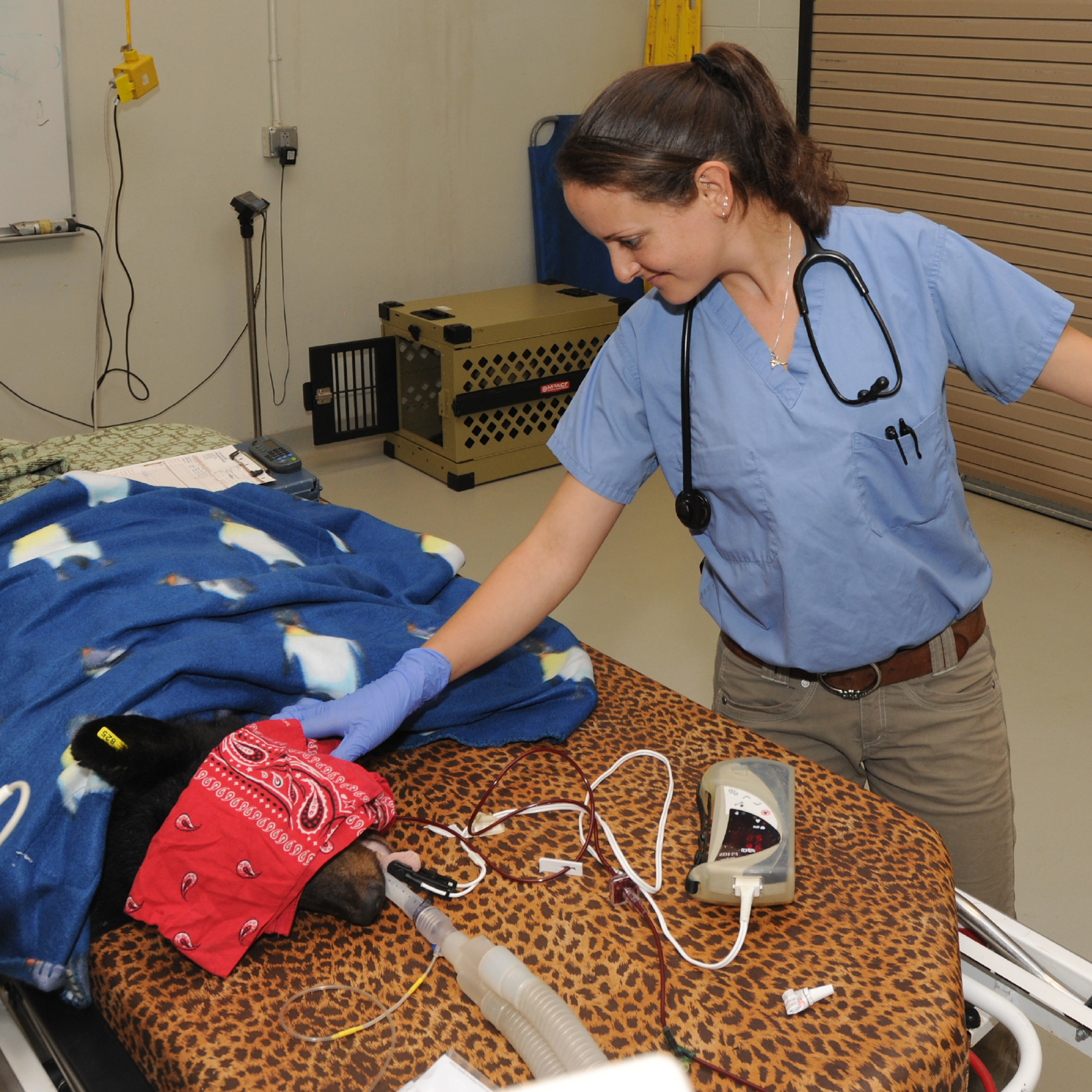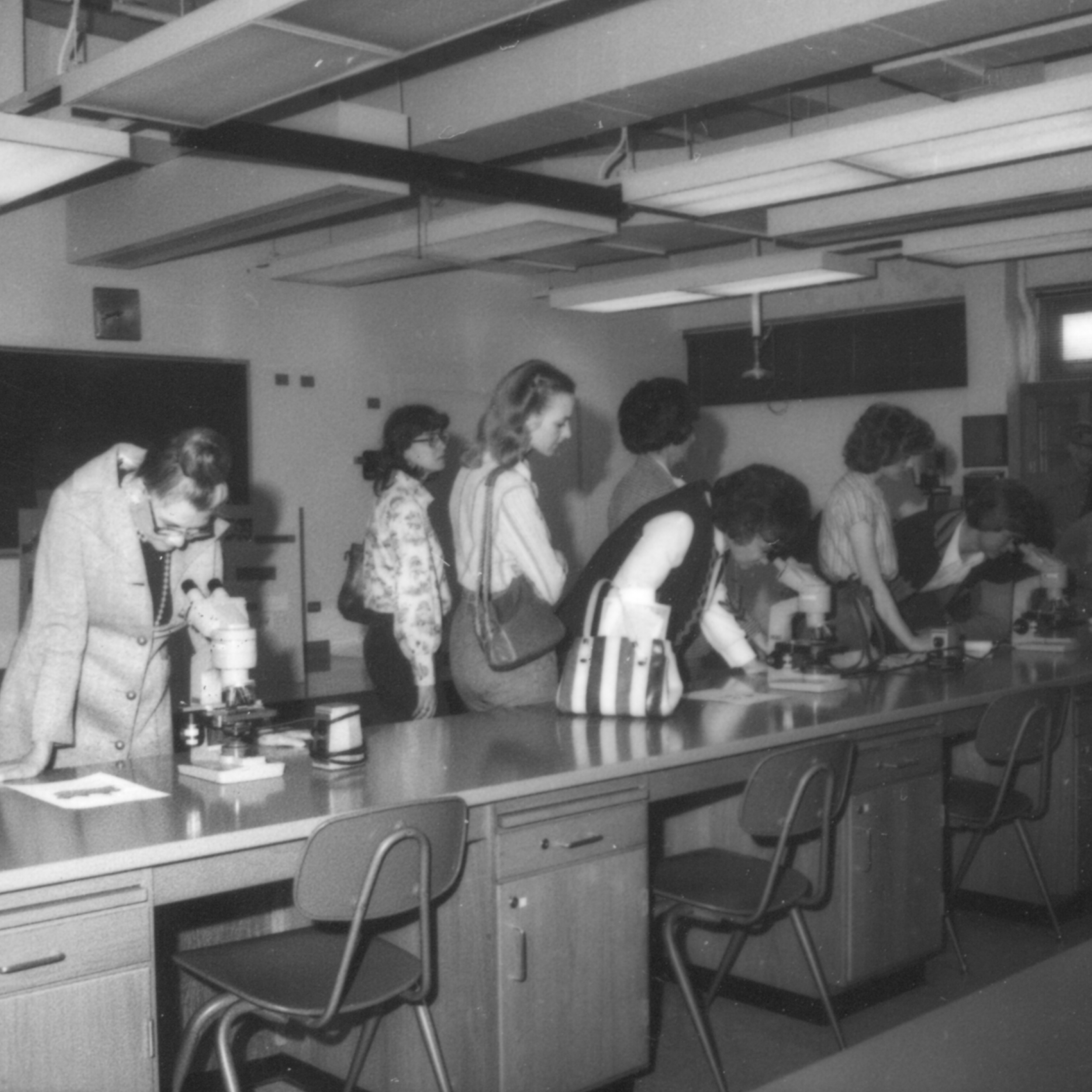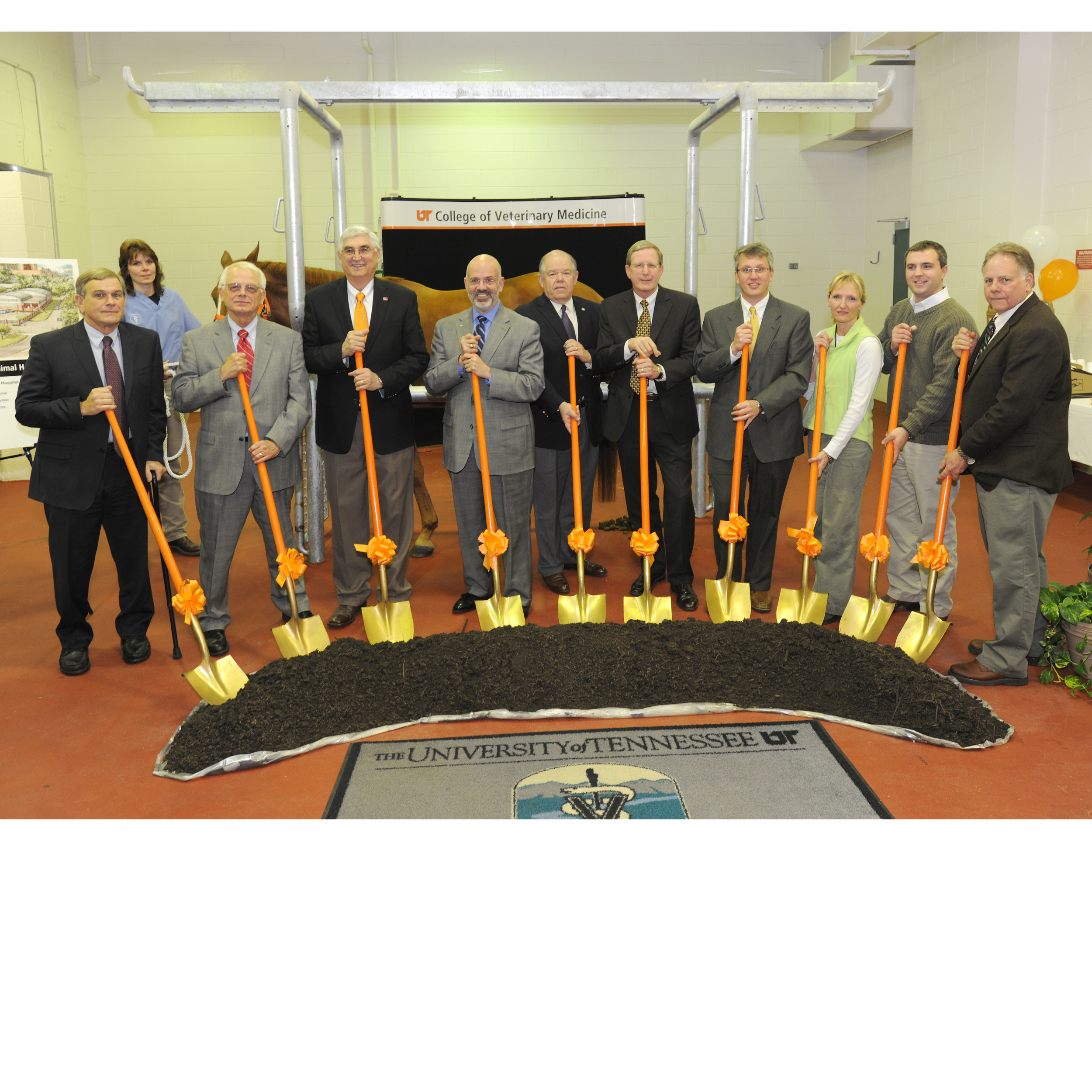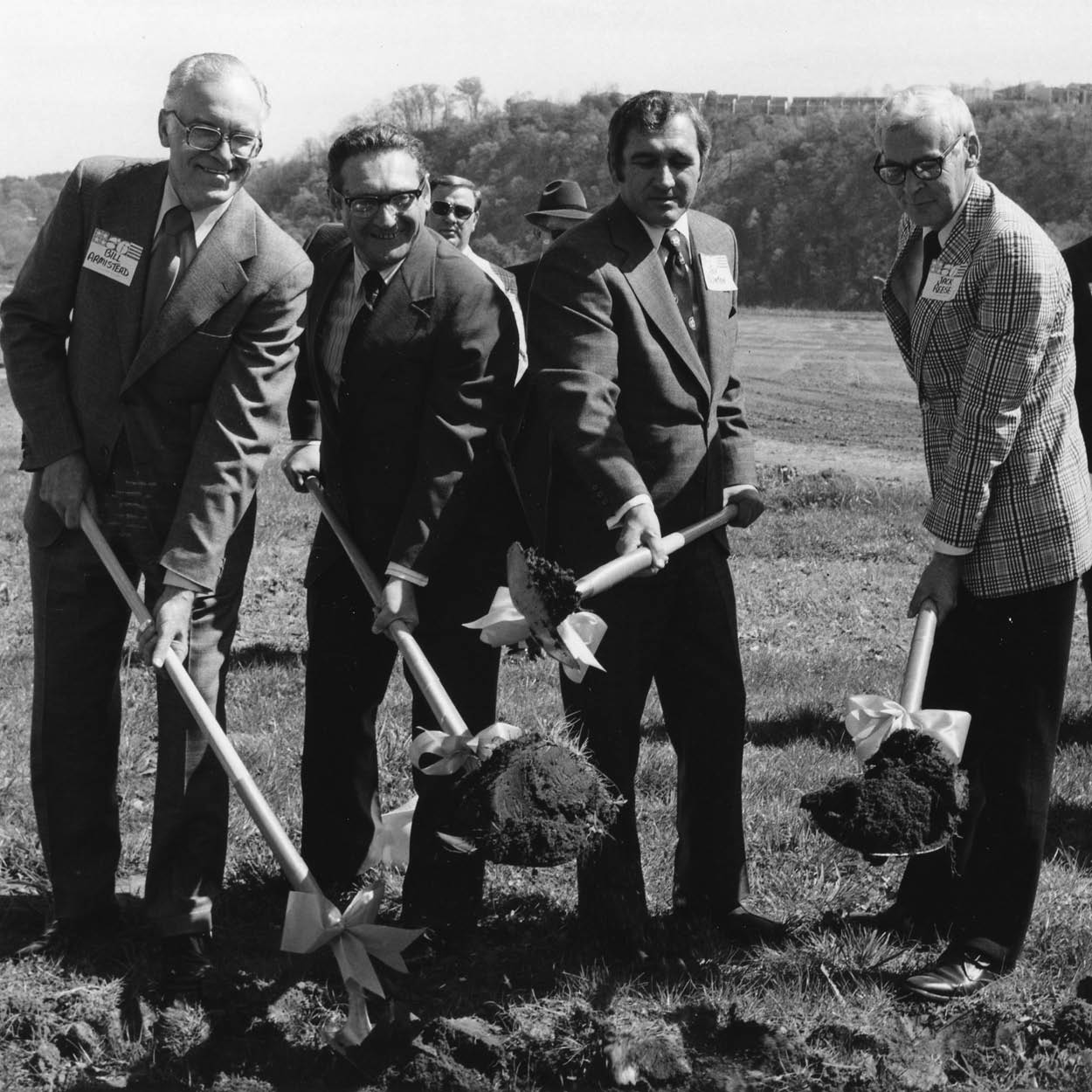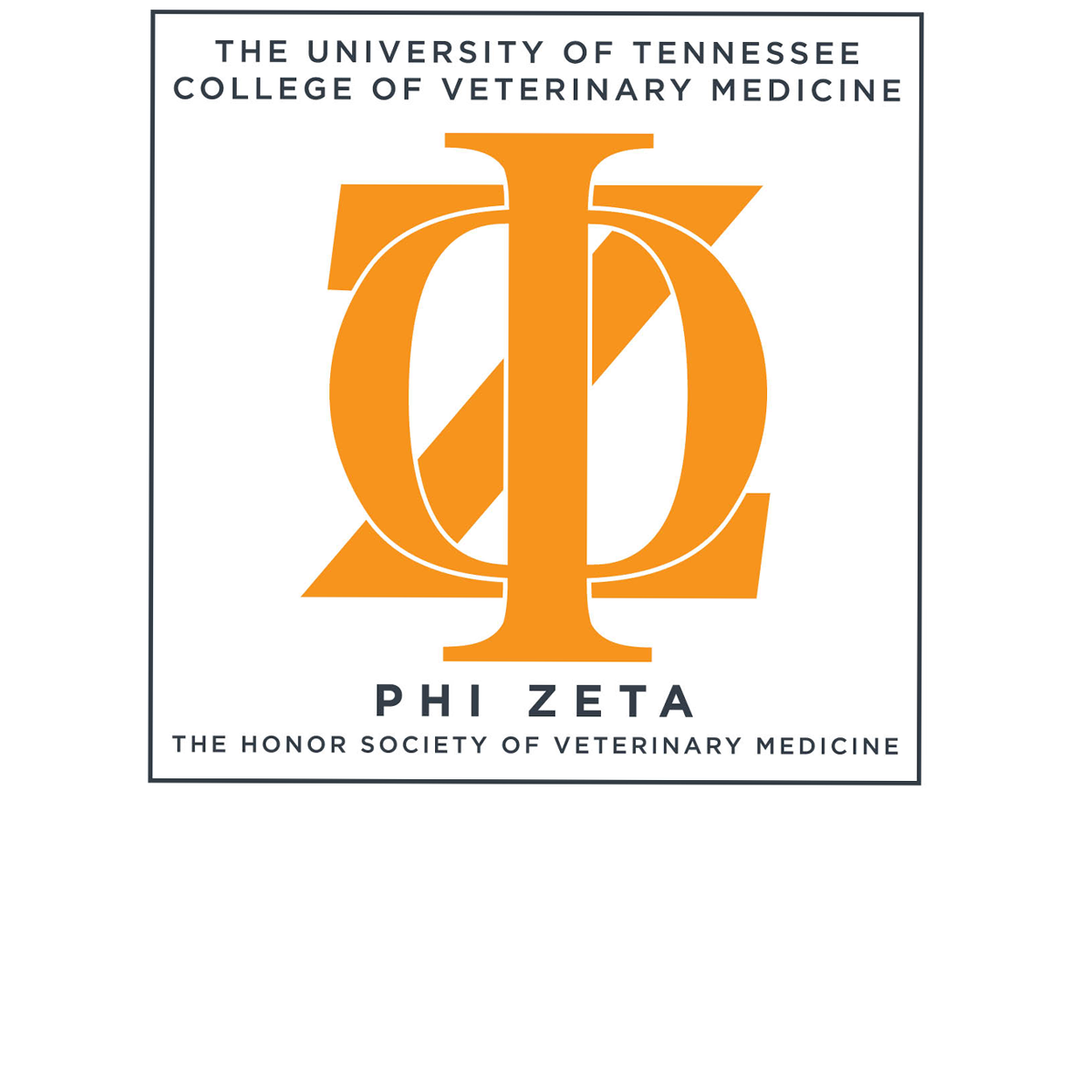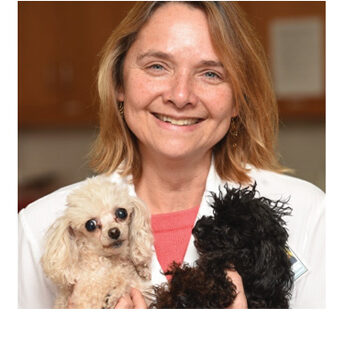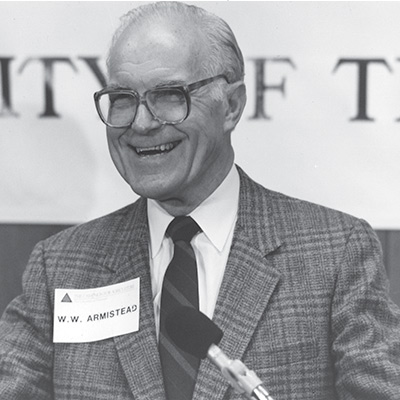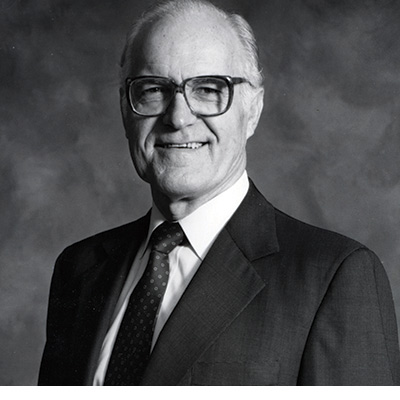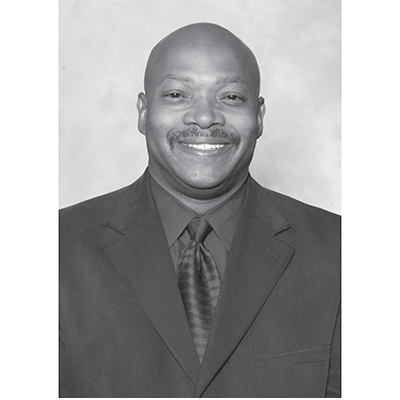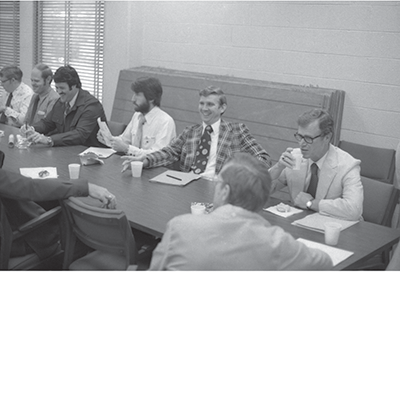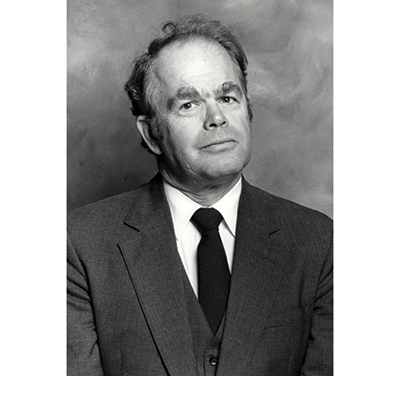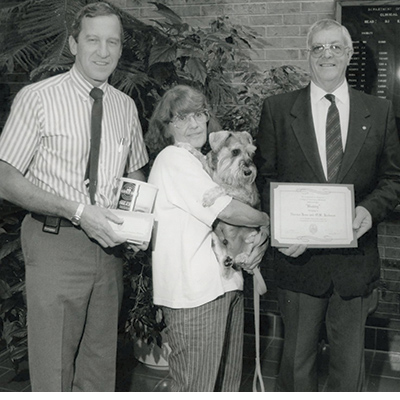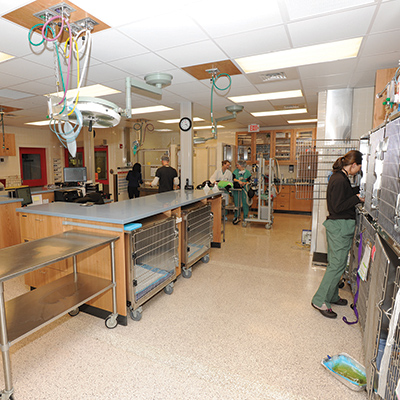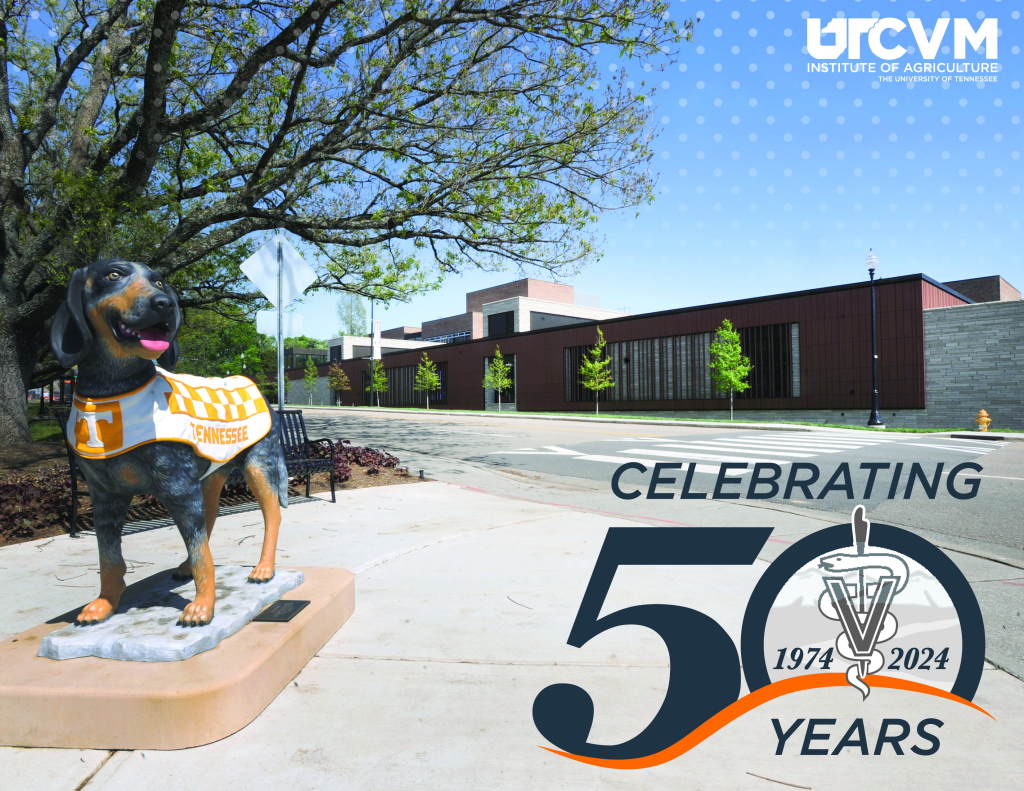In 1967 Clyde York, then president of the Tennessee Farm Bureau and member of the UT Board of Trustees, recommended the board ask the university’s administration to study the possibility of establishing a veterinary school to help alleviate the lack of access to veterinarians and provide more Tennesseans the opportunity to attend veterinary school. The board received the go-ahead and began a formal study. At the same time, the Tennessee Farm Bureau passed a resolution requesting a similar feasibility study. The Tennessee Veterinary Medical Association also formed a “School Investigating Committee” and later voted unanimously to support the establishment of a veterinary school in the state.
In 1968, the feasibility study recommended the establishment of a veterinary school on the Knoxville campus. Eventually, the Tennessee Legislature directed the Tennessee Higher Education Commission (THEC) to conduct a formal study. Dr. Willis W. Armistead, dean of Michigan State University’s veterinary college, was hired as the THEC consultant. His Increased Veterinary Services for Tennessee and Consultant’s Report became the foundation for the veterinary college.
In March 1974, legislation passed the House (unanimous vote) and Senate (32-1 vote) establishing a veterinary college. Governor Winfield Dunn signed the legislation on March 19 of that year.
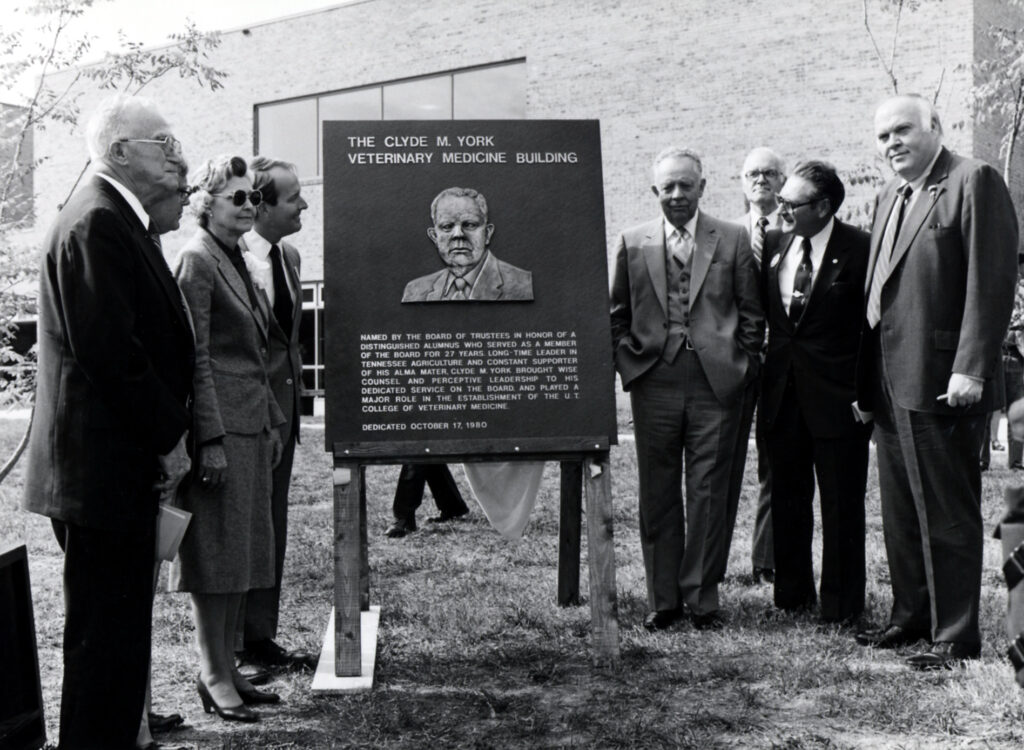
Once the veterinary college was established, the search was on for a dean. Dr. W.W. Armistead, the consultant who produced the Increased Veterinary Services for Tennessee and Consultant’s Report, was UT’s top choice. But would he want the position? After all, he was well known nationally in the veterinary profession: he was past president of the American Veterinary Medical Association, the Association of American Veterinary Medical Colleges, was founding editor of the Journal of Veterinary Medical Education, and had served as dean at Texas A & M and Michigan State University. In the summer of 1974, Armistead was named UTCVM dean. He later recalled in a 1987 videotape about the college’s founding that he was “hooked” on Tennessee in part, because of the new program’s unusual amount of support.
The UT College of Veterinary Medicine’s 50th anniversary celebration continues. We have planned special events throughout the year to thank our faculty, staff, students, alumni, referring veterinarians, clients, and supporters who have been or are our essential partners in the College’s success. We hope you will look forward to our monthly emails throughout 2024 as we highlight a different aspect of the College’s history. This month, hiring a leader.
With his vast experience within the profession, Armistead knew professors all over the country. That served the college well when he hand-selected his faculty and staff. Nancy Smith, administrative secretary and later assistant to the dean was his first hire. Armistead hired department heads to lead the Department of Urban Practice (Dr. Dean Gage), the Department of Rural Practice (Dr. Horace Barron), the Department of Pathobiology (Dr. Robert Michel), and the Department of Environmental Practice (Dr. Hyram Kitchen). The heads of the UT Department of Animal Science (Dr. Ronald Johnson), and Department of Microbiology (Dr. Arthur Brown), were already at the University. Armistead and the department heads selected Dr. William Grau as associate dean for resident instruction and Dr. Charles Reed as associate dean for development.
– 50th Anniversary Committee, with gratitude to Dr. Nancy Howell, author of A Recent Past, An Unlimited Future.
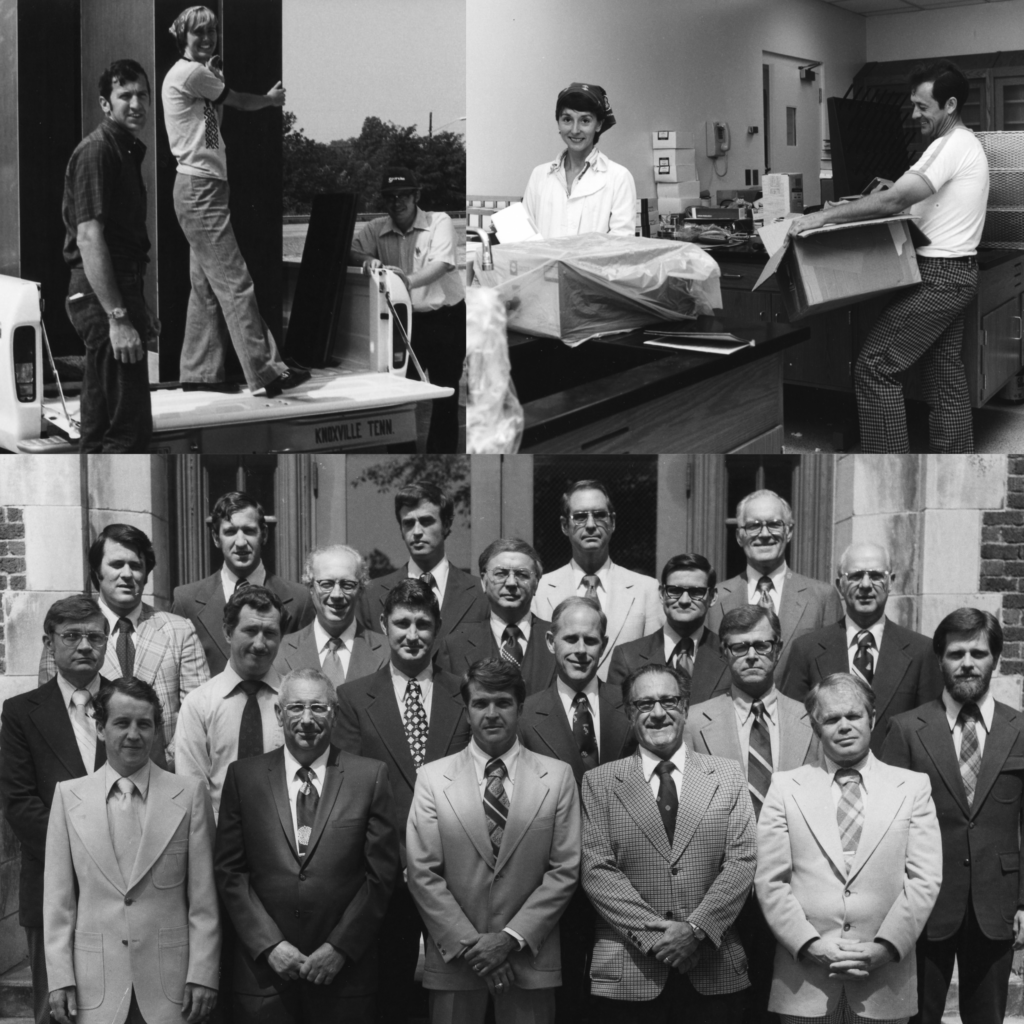
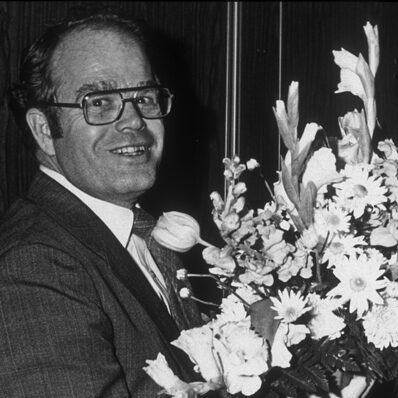
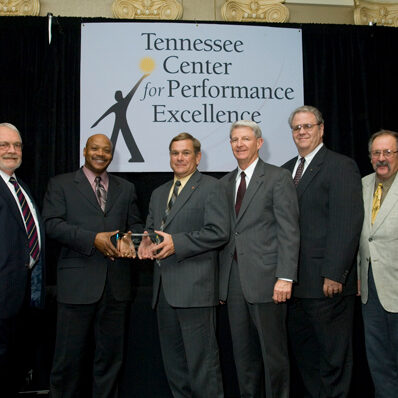
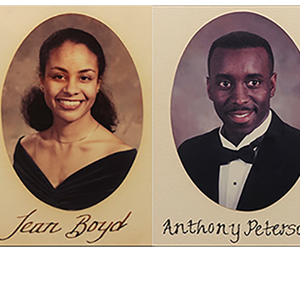
The UT College of Veterinary Medicine’s 50th anniversary celebration continues, and this month heralds Founder’s Day. Throughout the year we have planned special events to thank our faculty, staff, students, alumni, referring veterinarians, clients, and supporters who have been or are our essential partners in the College’s success. We hope you will look forward to our monthly emails throughout 2024 as we highlight a different aspect of the College’s history. This month, brick by brick.
In 1973, a tract of land on the agricultural campus facing Neyland Drive and the Tennessee River was identified for the new veterinary building. In a 1993 interview with Nancy Howell for A Recent Past, An Unlimited Future, Dr. Joe Johnson said there was never any question about where to locate the school. “That was the only logical place to put a veterinary school because of the land grant mission of the university, the Institute of Agriculture, and UT’s large faculty.”
On April 3, 1976, faculty, staff, and governmental leaders attended a groundbreaking ceremony for the new building. Originally, the College of Agriculture used the land for field test plots. Dr. Leonard Josephson chronicled the construction of the veterinary college with periodic photographs from his office window in the Plant and Soil Sciences Building. He later gave the slides to Dean Armistead and noted on the envelope that the land was “originally a useful and profitable acreage.”

Dean W.W. Armistead had estimated design and construction of the facility would be $ 17 million and the legislature appropriated all the money at one time. The college was designed and built on schedule with enough money to almost double the size of the Agriculture-Veterinary Library. Construction of the veterinary building took about two years. In September 1978, faculty, staff, and students moved into the new facility. Previously, classes had been held at Cherokee Farm.

– 50th Anniversary Committee, with gratitude to Dr. Nancy Howell, author of A Recent Past, An Unlimited Future.
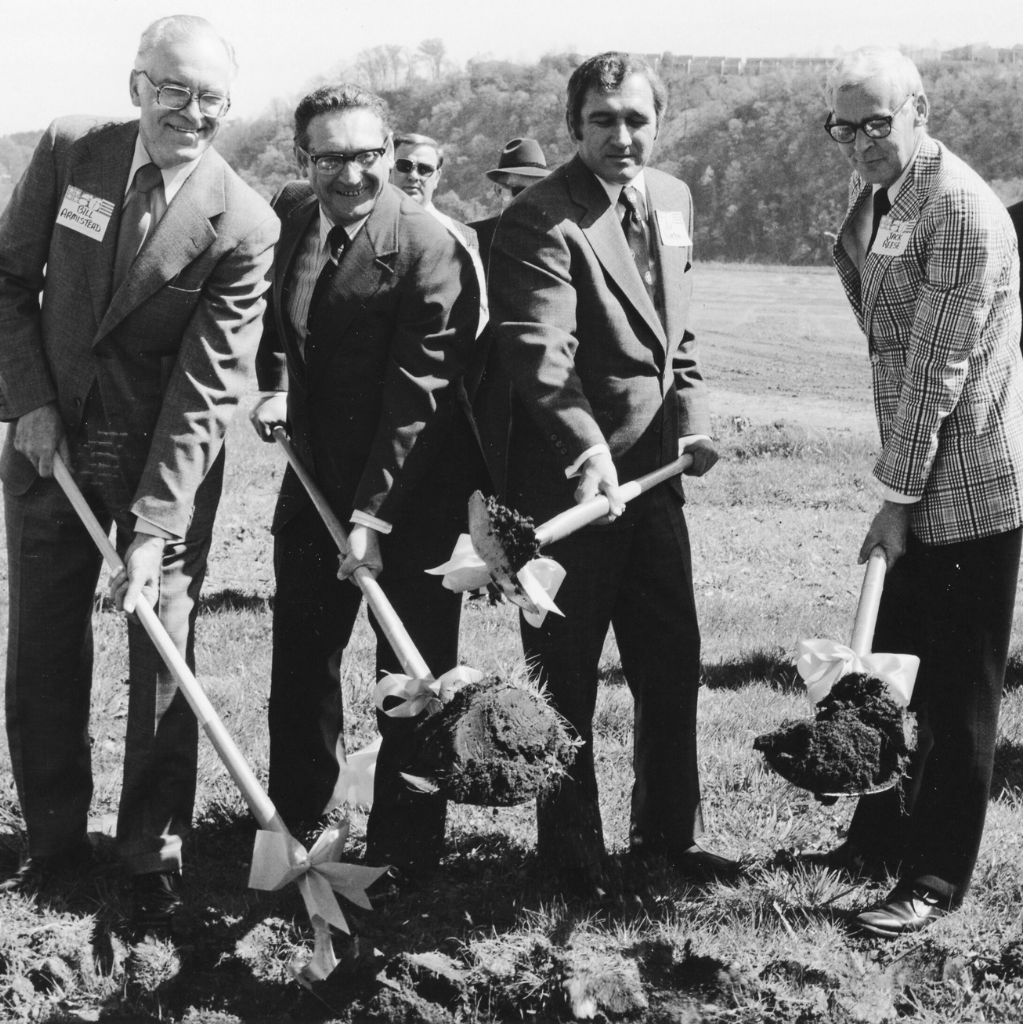
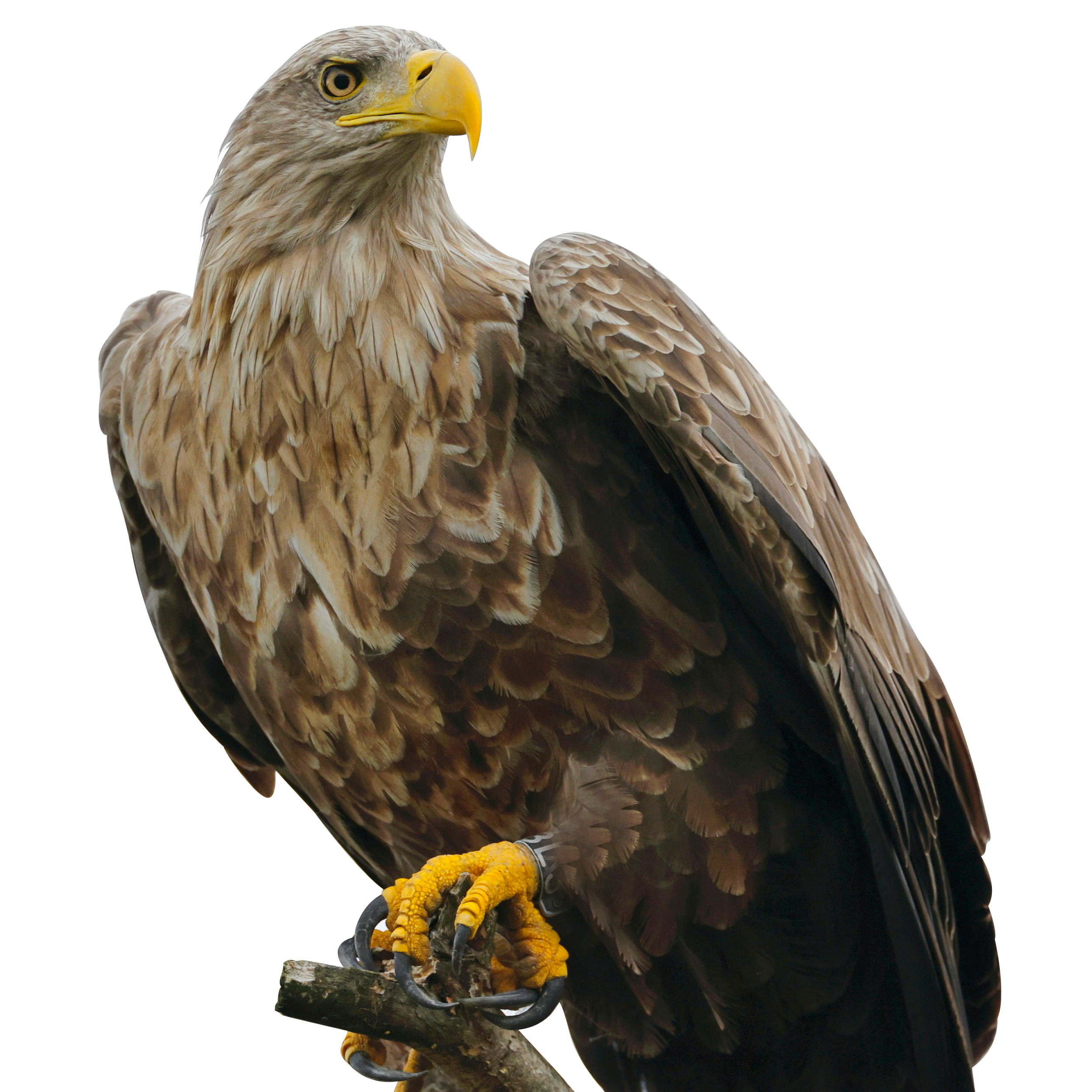
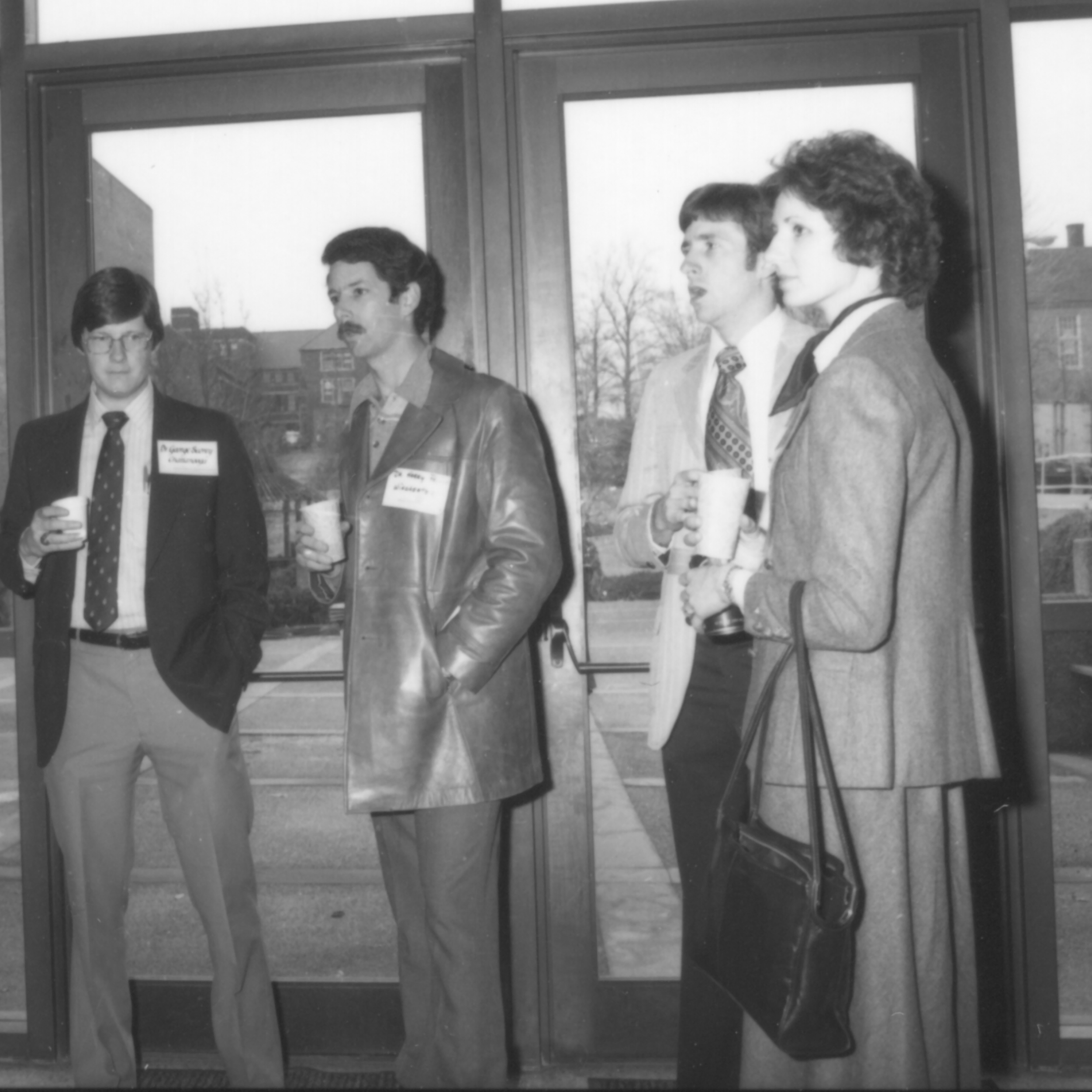
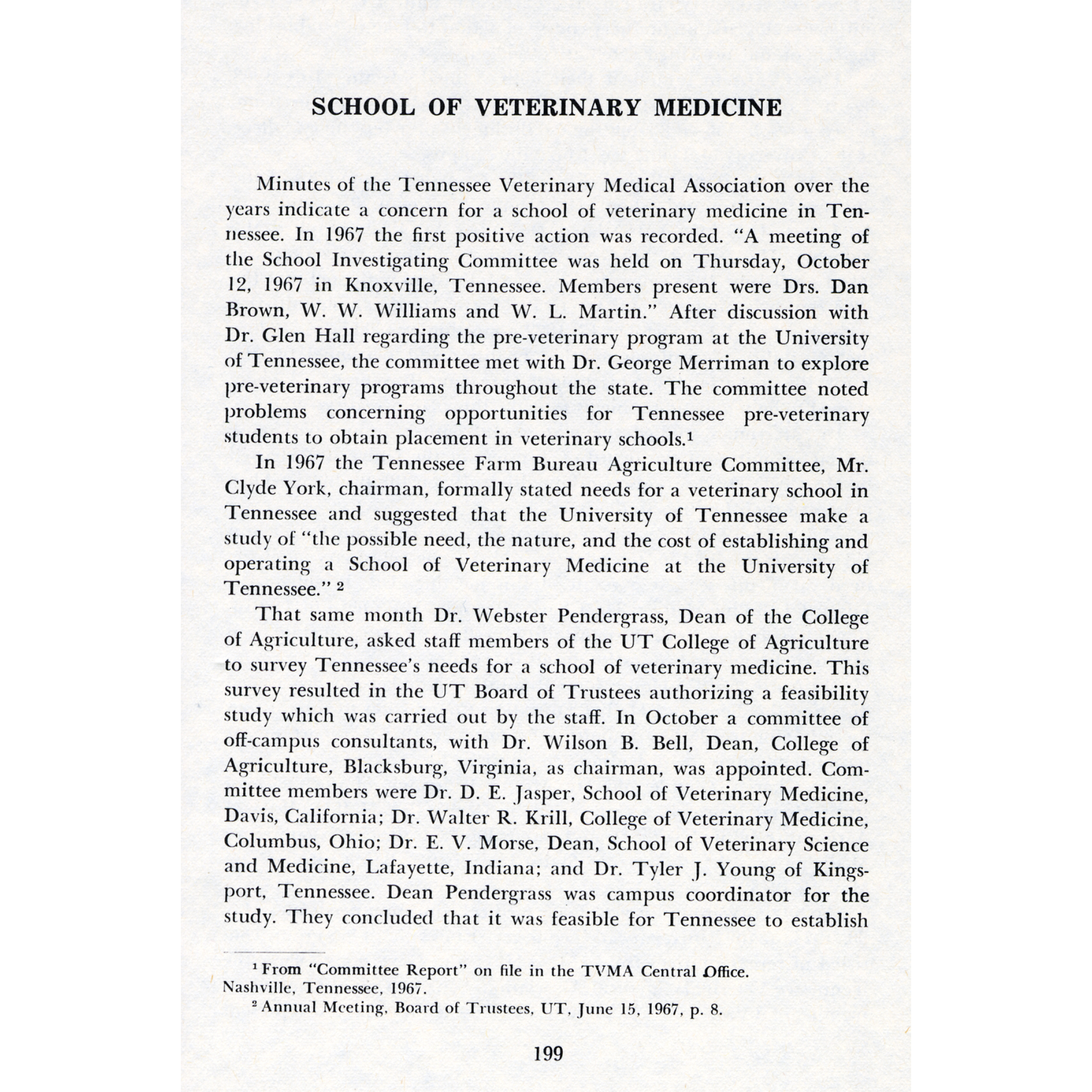
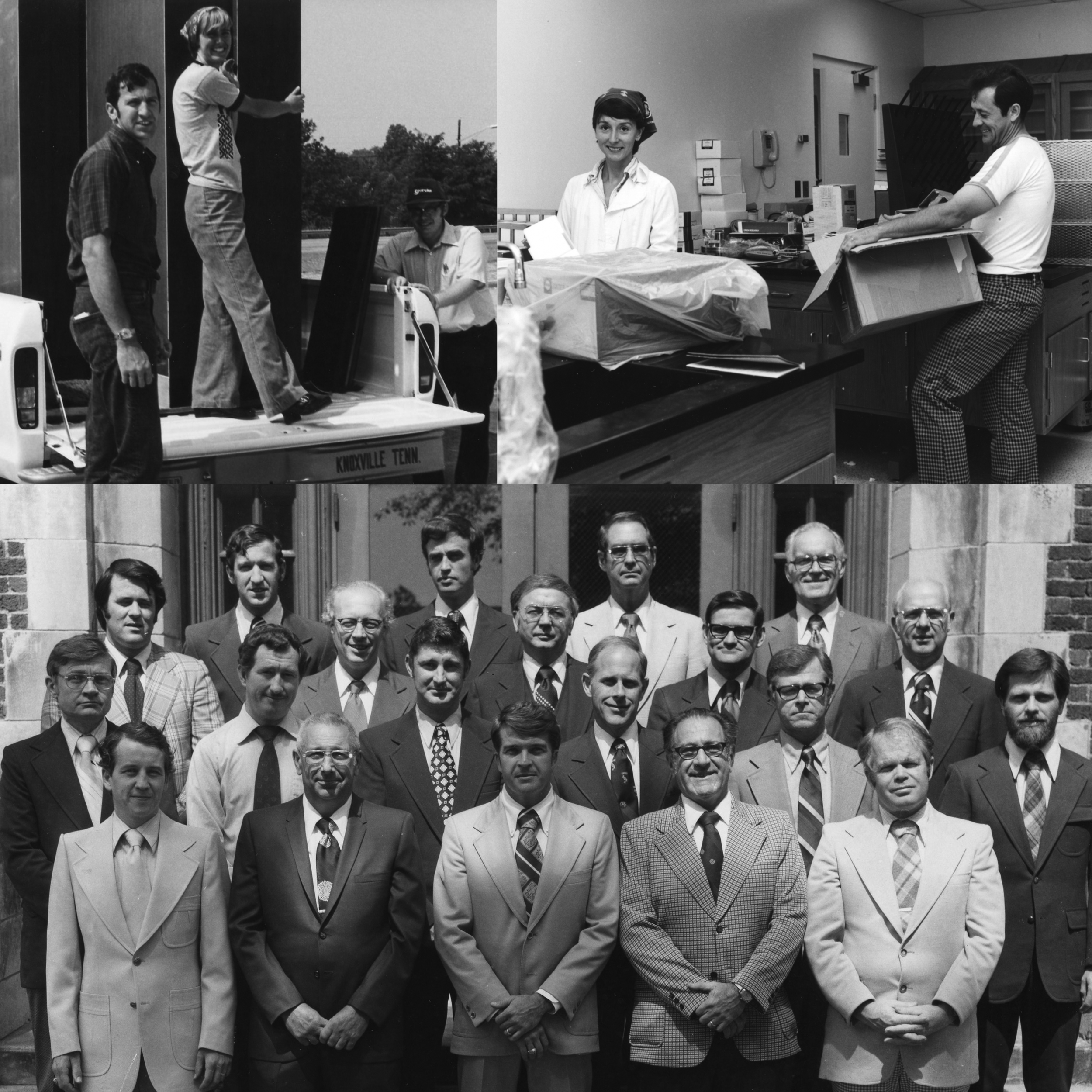
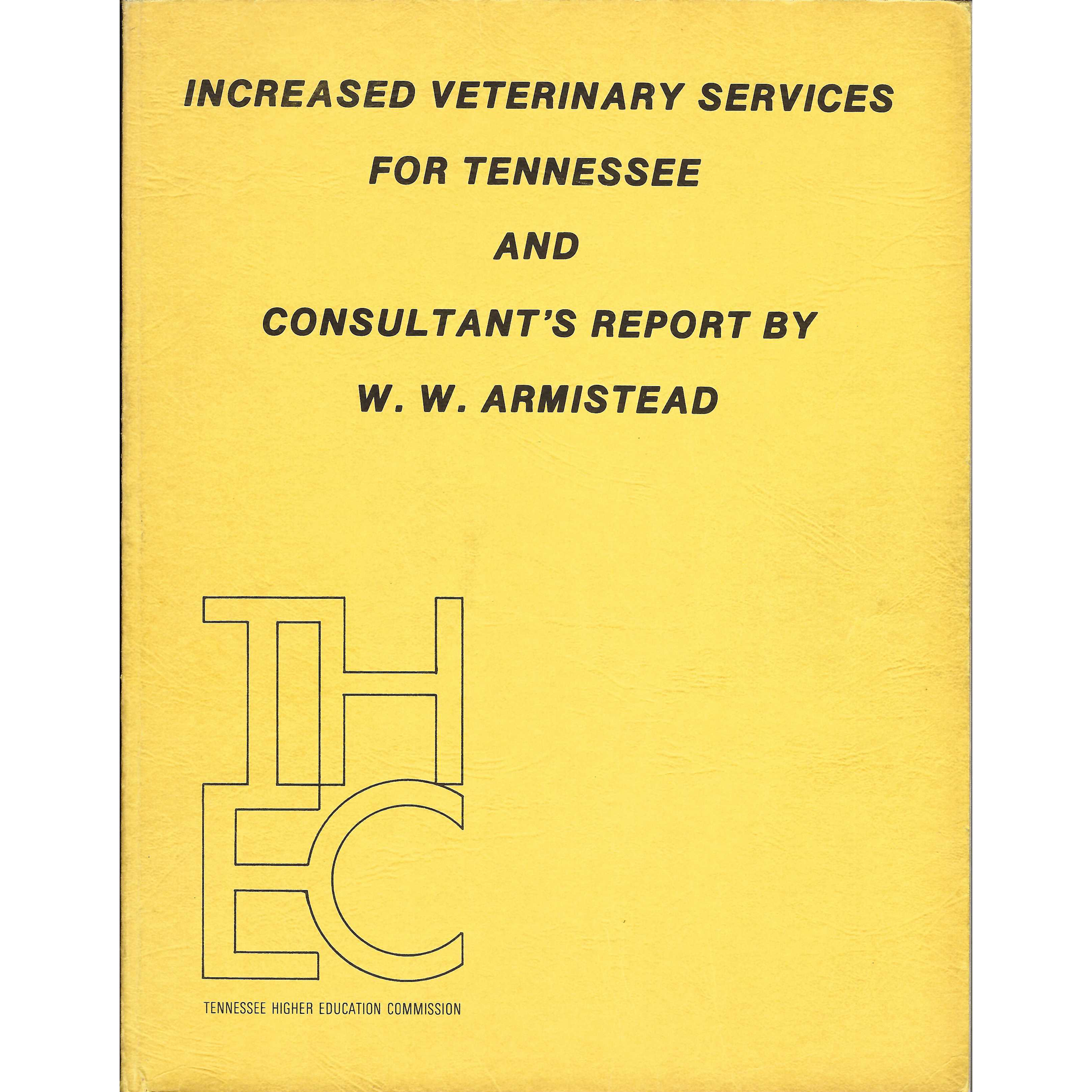
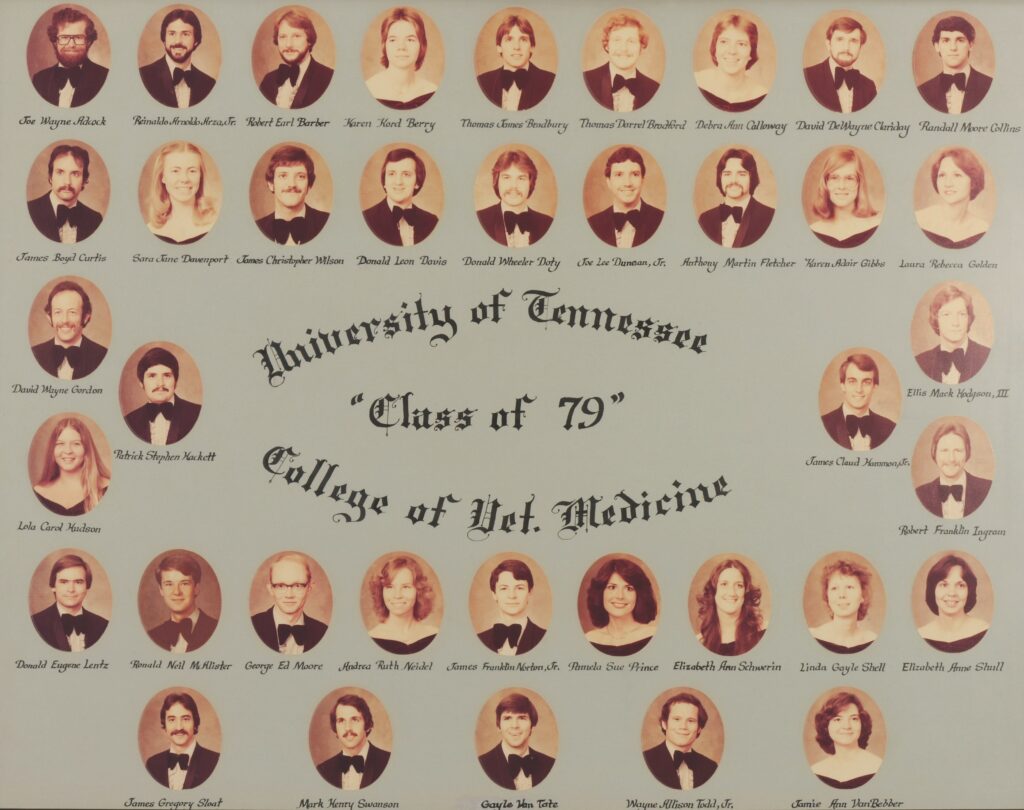
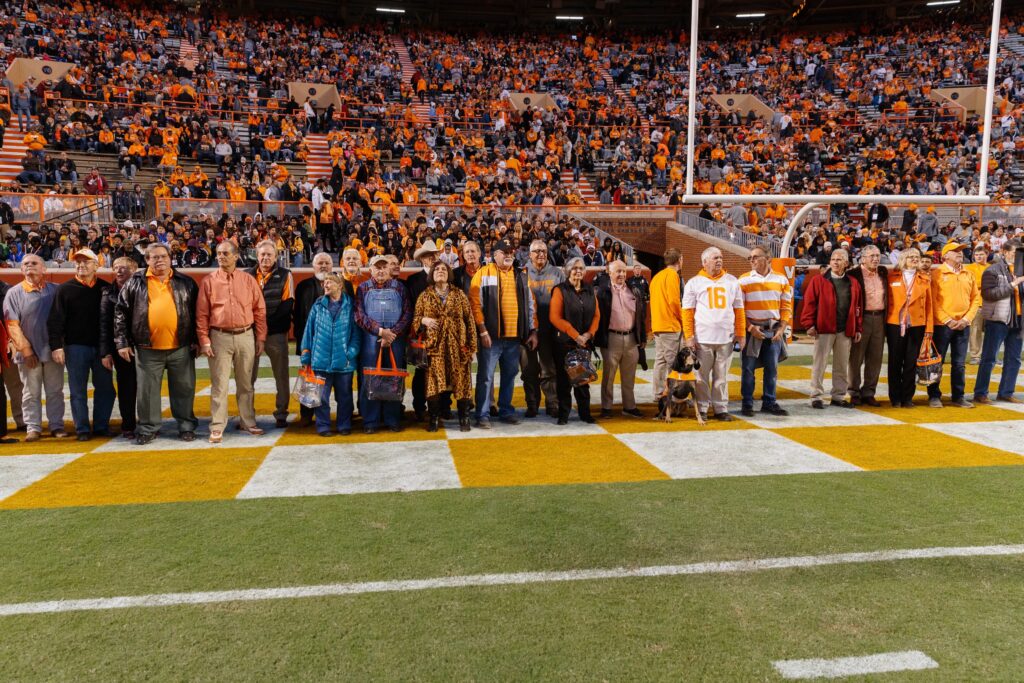
The UT College of Veterinary Medicine’s 50th anniversary celebration continues, and throughout the year we have planned special events to thank our faculty, staff, students, alumni, referring veterinarians, clients, and supporters who have been or are our essential partners in the College’s success. We hope you will look forward to our monthly emails throughout 2024 as we highlight a different aspect of the College’s history. This month, the first class.
In the 1973 report to a Special Joint Committee of the Tennessee General Assembly, Increased Veterinary Services for Tennessee, W.W. Armistead wrote, “Tennessee has an inadequate supply of veterinarians. At present, there are about 340 veterinarians practicing in the State, which is a little less than 9 veterinarians per 100,000 population. The national ratio is about 13.5 veterinarians per 100,000 population, so Tennessee is substantially behind the national average.” At the time, two national studies concluded it would take 17.5 veterinarians per 100,000 to provide adequate services to pets, livestock, public health services, education, and research.
Tennessee purchased student contract spaces at other veterinary colleges in several states including Georgia, Kansas, and Ohio through the Southern Regional Education Board (SREB). The majority of contract spaces were in Alabama. Through the SREB program, 21 out-of-state students received in-state tuition in Alabama (19 at Auburn and 2 at Tuskegee) in 1973.
In the report, Armistead noted that states with veterinary colleges tended to have more accessible veterinary services. The majority of Tennesseans returned to the state to practice. About two-thirds of the veterinarians practicing in the state in 1973 were Auburn graduates.
201 Tennesseans applied for the Class of 1979. 117 were interviewed and ultimately twenty-eight males and twelve females were accepted. In the fall of 1976, forty students began a hectic three-year, year-round veterinary curriculum. Dr. Pat Hackett, Class of 1979 president, wrote in a VOLVet Vision Magazine article, “It all began in 1976. We were asked to go to veterinary school year-round for three years, unlike any other veterinary school in the country. That is the first unusual situation. The second was we didn’t have a building; we just used whatever space was available. That was fine for classrooms because there were always some that we could borrow. Anatomy lab was a little tougher! So, they remodeled the area below the seats in the Brehm Arena. It was temporary, so no need for heat or air.”
UTCVM Historical Events in April
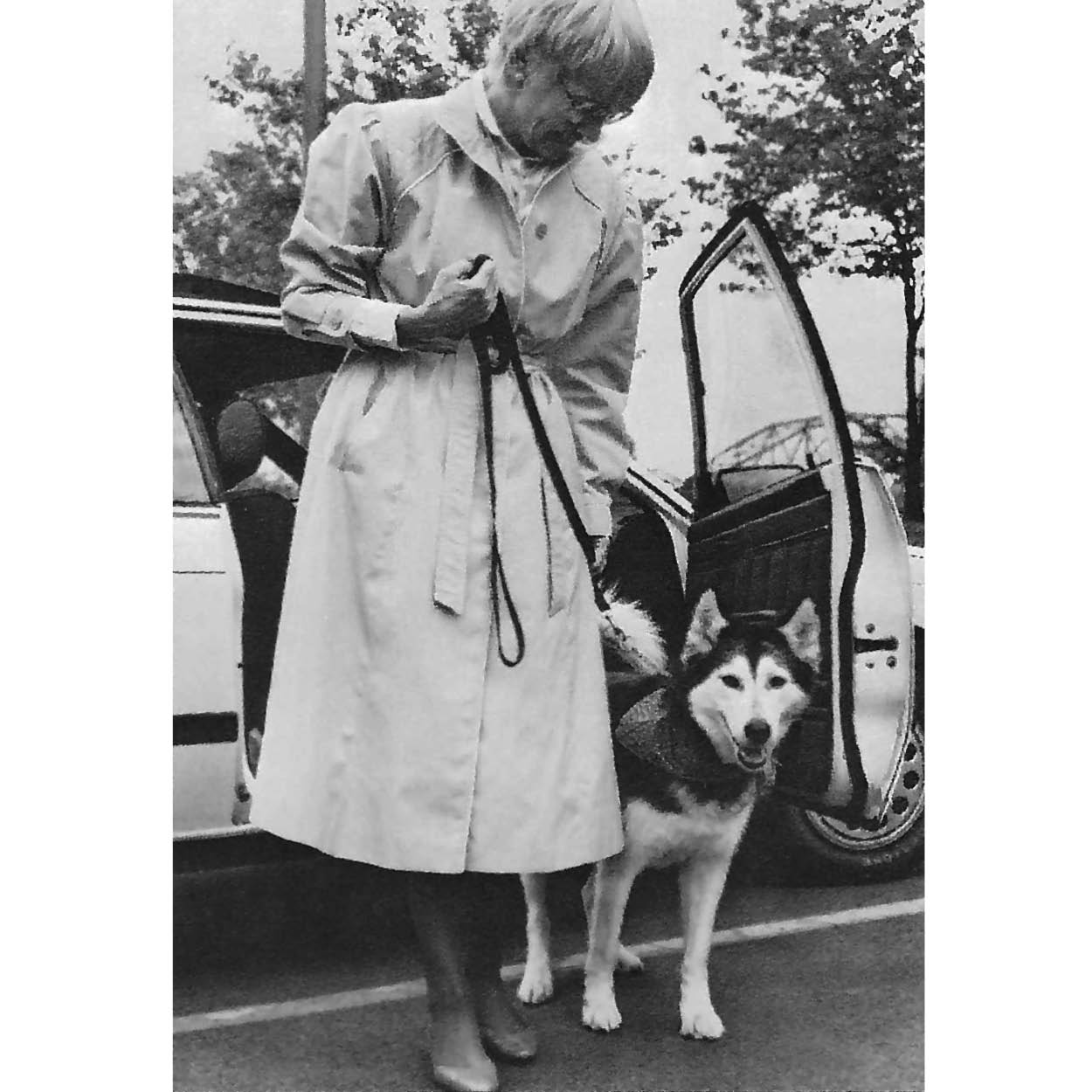
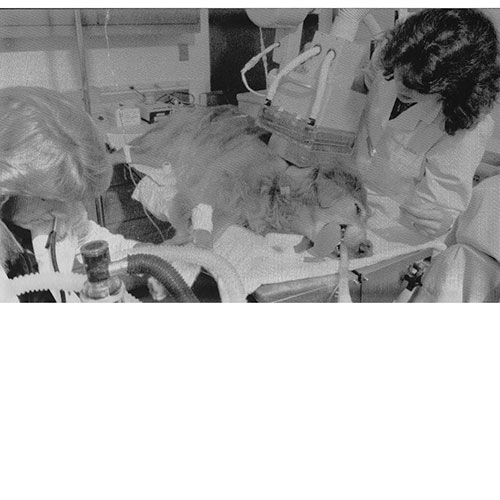
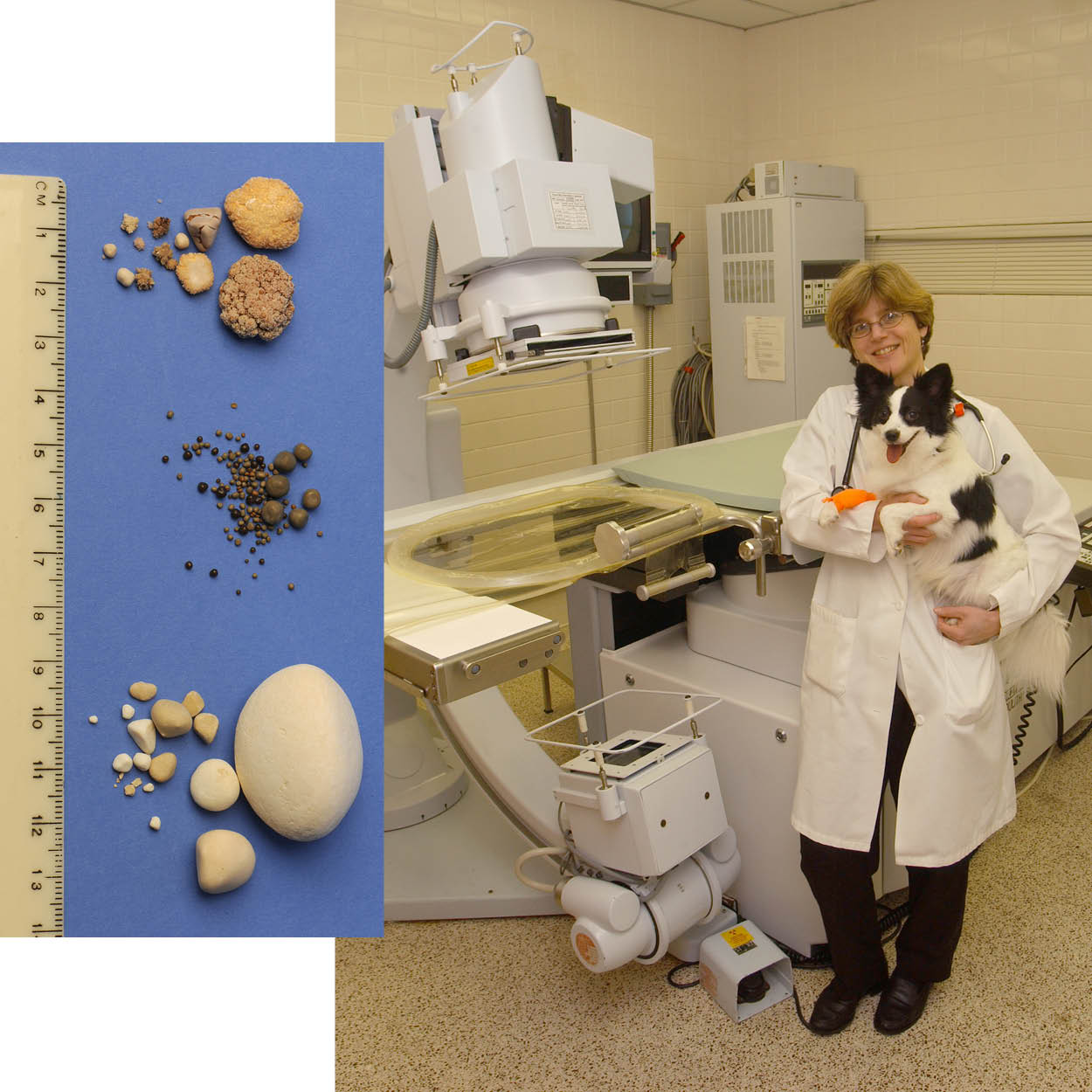
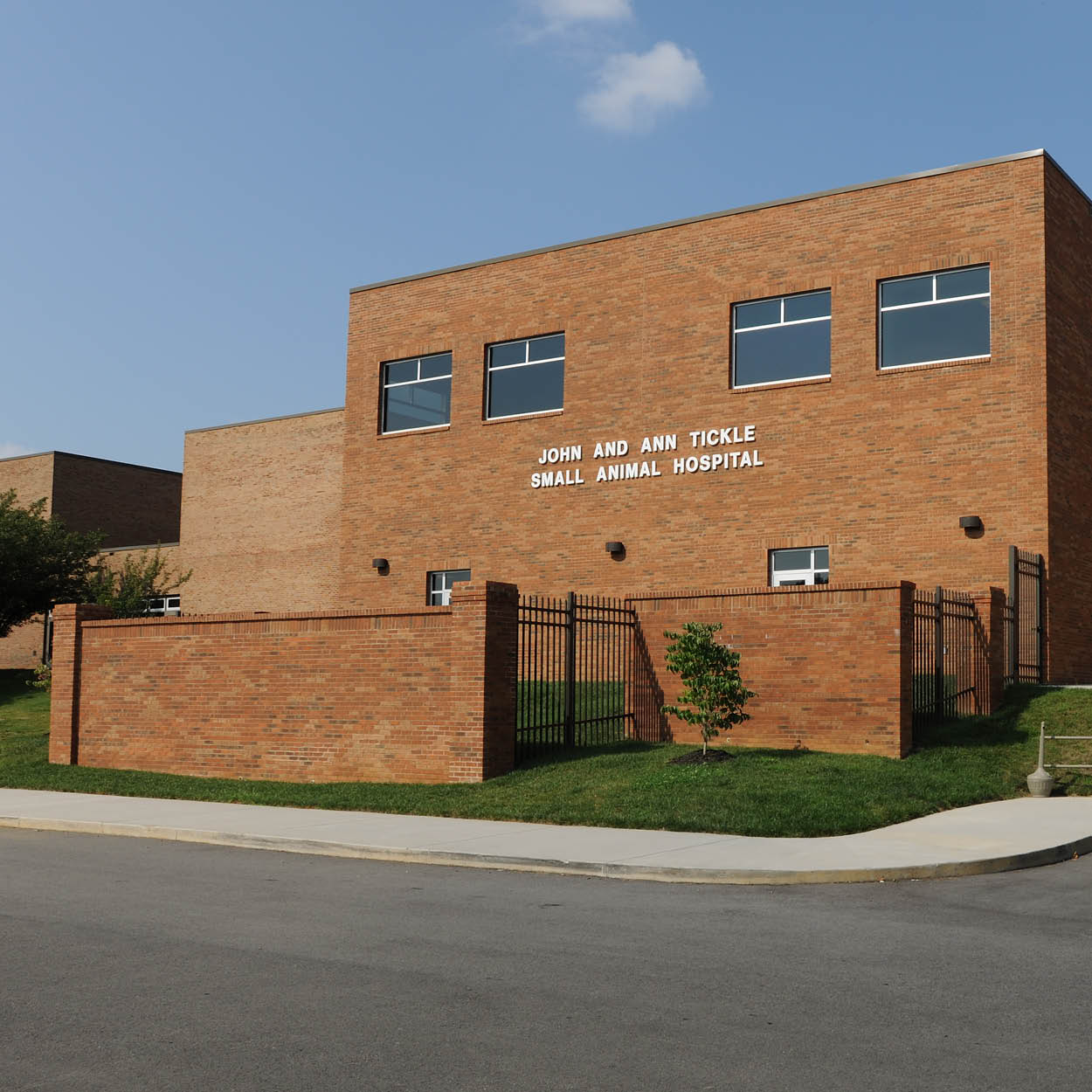
When the last member of the Class of 2024 walked across the stage at the Commencement and Hooding Ceremony, UTCVM surpassed a milestone — graduating over 3,000 veterinarians. 90 students comprised the college’s 45th graduating class; there was no graduating class in 1991 since the college had moved to a four-year semester program.
Due to the COVID-19 pandemic, the Class of 2024 didn’t have the opportunity to take part in team-building exercises, the Tennessee Welcome, or the white coat ceremony before beginning their professional educational journey. In the fall of 2020, they started vet school via Zoom and watched their professors adjust to the transformation of the delivery of the curriculum. The only class they were on campus for the entire first year was anatomy, and then they were in small groups. It wasn’t until they were a quarter of the way through their education (second year) before they got to meet each other.
The first 50-year foundation set in place by outstanding administrators, faculty, and staff helped set the tone to face challenges head-on. The Class of 2024 did just that and succeeded.

UTCVM Historical Events in May
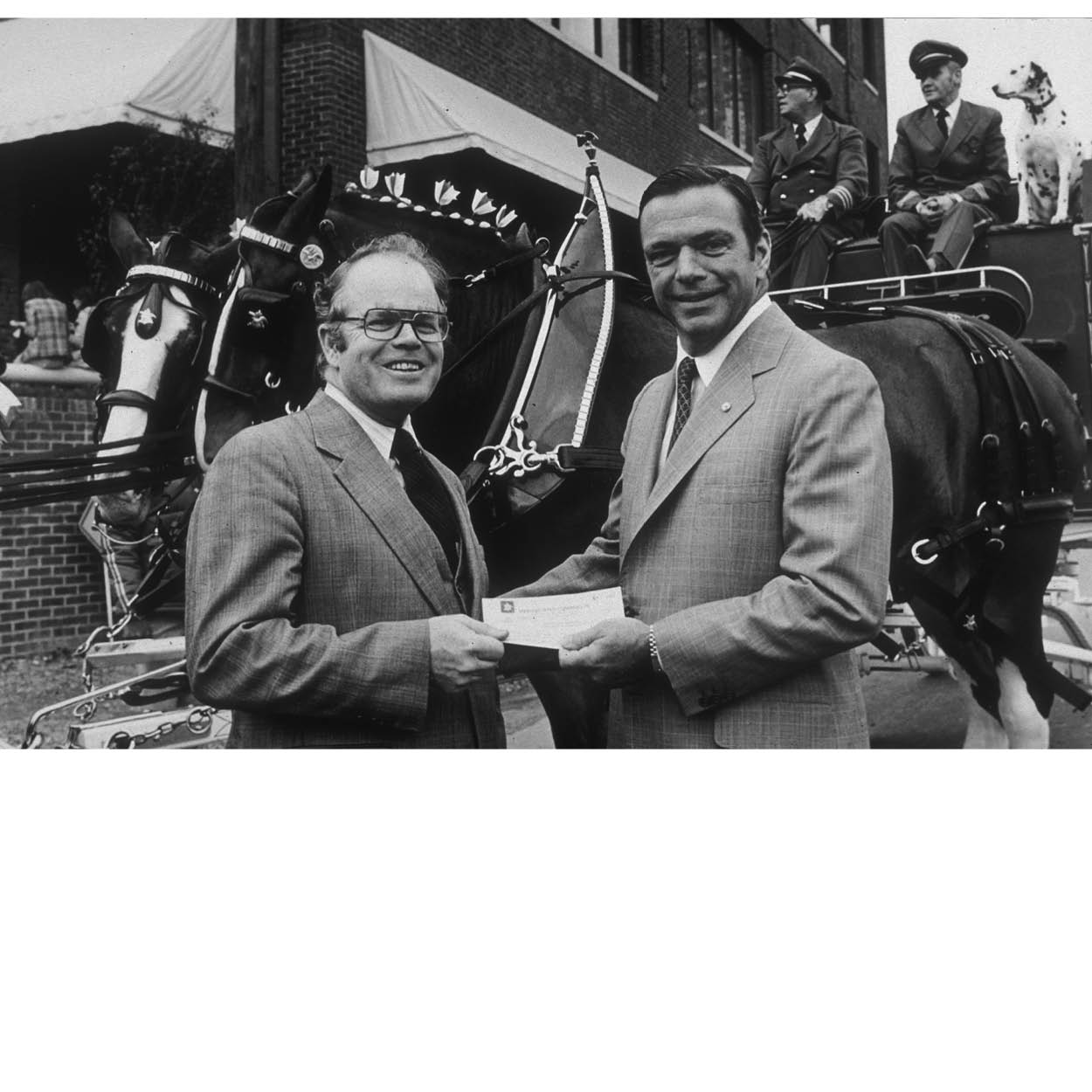
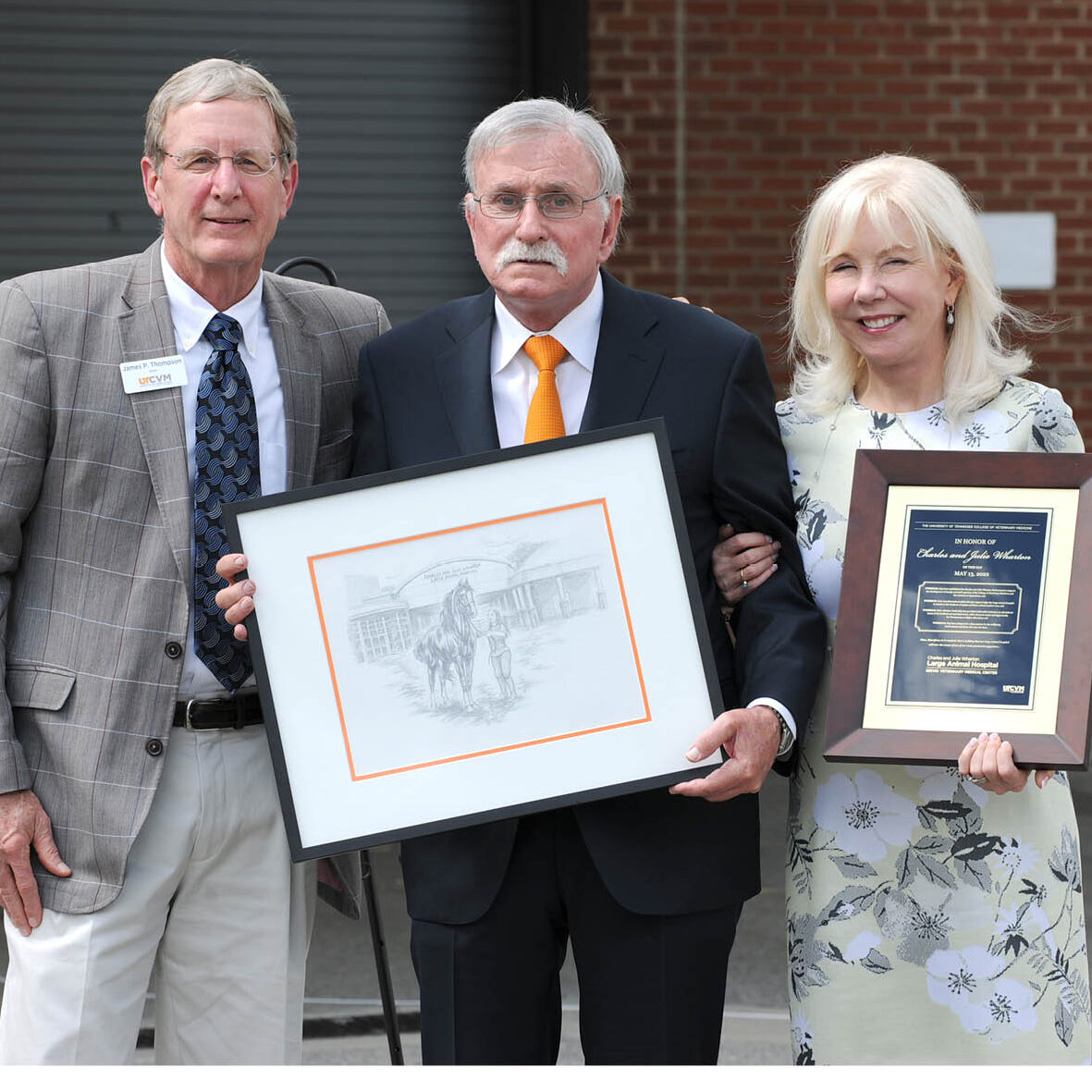
Take one parasitologist. Add a pinch of evangelist and toss in a little cheerleader. That’s been the recipe for success in Sharon Patton’s career. Patton, a professor in the Department of Biomedical and Diagnostic Services, came to the veterinary college is 1977 as the first female faculty member of the College of Veterinary Medicine. Although she retired in 2014, just ask a former student about hookworms and you will hear a familiar chorus. The following Q & A appeared in the 2013 spring edition of Land, Life, & Science magazine. She and her daughter Rachel (known to many former veterinary students) were highlighted in a Mother’s Day story in May 2024. Rachel is an associate professor in UT’s Department of Biochemistry and Cellular and Molecular Biology.
WHAT WAS IT LIKE TO BE FIRST FEMALE FACULTY MEMBER – DID YOU FEEL LIKE A TRAILBLAZER?
I was too young to feel like a trailblazer. In those early years, I did feel some responsibility for womankind. I had to be vigilant to be sure that the culture was welcoming to both male and female students and faculty.
WHY DID YOU CHOOSE THIS FIELD – AND WANT TO TEACH? Who knows why? I like the puzzles of figuring out parasites’ life cycles. Since I was raised on a farm and exposed to animals and diseases, gross things never bothered me.
Since she began her career, Patton has brought the same level of passion that she has for her profession into the classroom. She makes learning engaging and fun for her students, asking them to yell out answers and complete memorable phrases.
“My classes are like an old-time gospel meeting,” says Patton. “I have them yell out answers to my questions and complete my sentence when I say ‘Hookworms are…’ and they’ll yell, ‘VORACIOUS BLOODSUCKERS!’.” The purpose of all this is to enhance learning. I try to assure that some important principles will be remembered forever. Patton also devises lab cases for students with real-life scenarios of parasites infecting animals and causing disease that they must identify and make recommendations to treat and prevent. She requires a lot of work, but if they do it diligently they will learn the material and do well in her courses and then be better-prepared veterinarians.
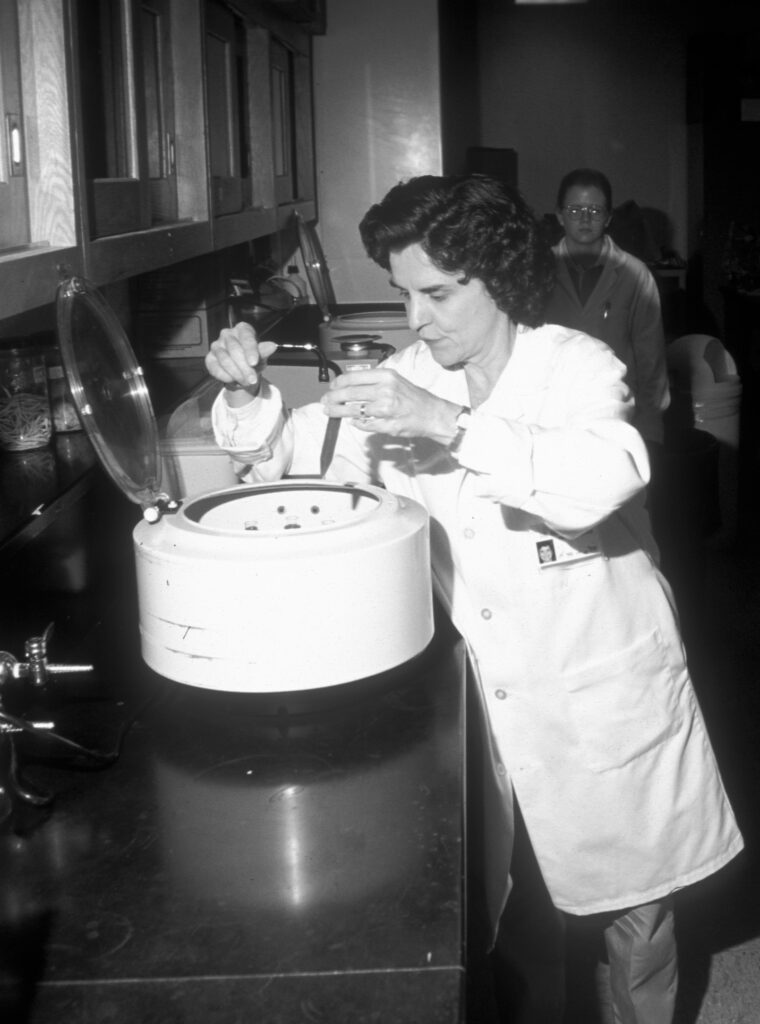
WHAT COURSES DO YOU TEACH? First and foremost I teach parasitology as well as parasitic principles in other courses in our curriculum such as zoonoses/food hygiene, alimentary systems, multispecies medicine, cardiovascular system, pharmacology I. With clinical rotations, I teach our students in each of their four years of veterinary school.
IS THIS SUBJECT WHAT VETS TAKE TO HELP THEM FIGURE OUT ILLNESSES AND DISEASES? Diagnosing, monitoring, and treating parasites are important to both animal and human health. Many parasites are zoonotic, meaning they can pass from animal to human and vice versa. It is a daily problem that the veterinarian sees. I am fortunate to be teaching a subject that the students usually understand is very practical and important.
SOME PEOPLE MAY THINK PARASITOLOGY IS A LITTLE GROSS – WHAT MAKES YOU LOVE THE FIELD SO MUCH?
I love it because it is practical and down to earth. I love the complicated life cycles and the mystery that is still involved in trying to understand how and why parasites do what they do. They are beautiful with very different characteristics such as teeth and alae and copulatory bursas. It is true they do horrible things to animals and people, and I love to foil them in these desires. I enjoy teaching students who are dedicated to improving animal and human life. One way to do that is to control and eliminate parasitic disease. Parasitism affects animal production and may bring on death and disease in animals and humans.
As a trailblazer herself, the parasitology professor knows the importance of teaching her students the fundamentals and provides them with tools to help them succeed in an ever-changing world.
“The environment and international travel have changed in the over three decades I’ve been teaching, new parasites are being discovered and new treatments are coming about and our understanding of control has changed, so most of what I teach I was never taught,” Patton said.
“There is always change, which is why I teach my students the importance of remembering the principles and understanding how something works so they can adapt to any change they may face.”
EXAMPLE OF WHAT YOU’RE TALKING ABOUT ABOVE — If you give a person a parasite, he will know that one parasite. If you teach the person to understand the characteristics and principles of parasitism, he can figure things out on his own for the rest of his life
(Patton has authored or co-authored over 100 scientific papers and has presented at over 150 scientific and service talks)
UTCVM Historical Events in June
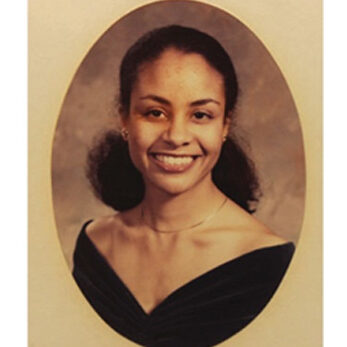
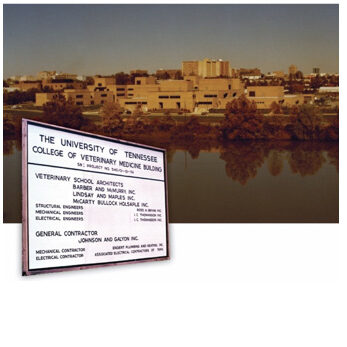
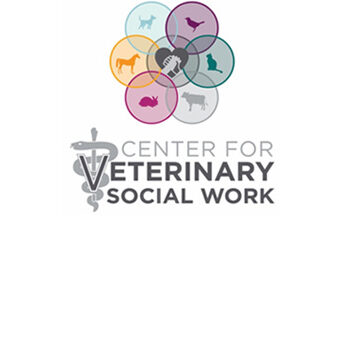
UTCVM Historical Events in July
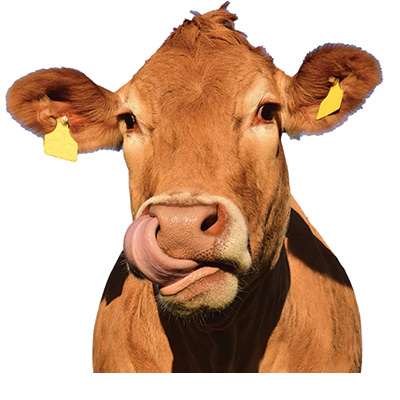


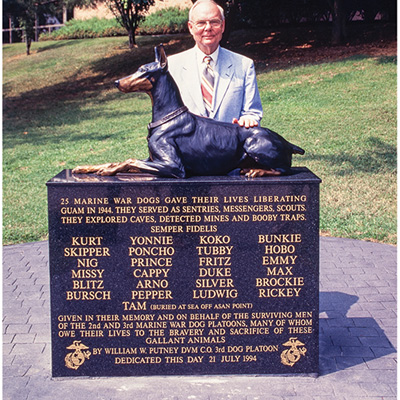
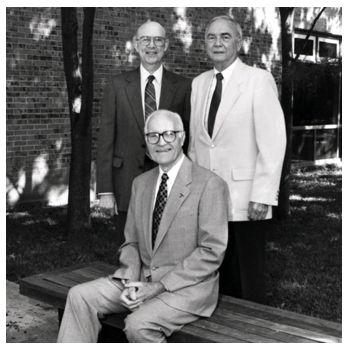
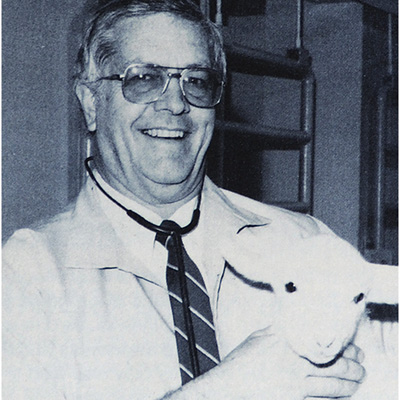
As we continue our yearlong 50th anniversary celebration of the University of Tennessee College of Veterinary Medicine (UTCVM), it is only fitting that we commemorate this milestone with something extraordinary. Angela Kites, our college’s graphic designer, created a stunning mosaic of digital images featuring many of our dedicated faculty, staff, and students over the years. Since we are Smokey’s veterinary team, the mosaic forms an iconic image of the Volunteer mascot.
Dean Paul Plummer and Associate Dean Marcy Souza unveiled the mosaic at a college-wide Morning Mixer this summer. The mosaic is more than just artwork; it symbolizes the unity and collaborative spirit that has defined UTCVM over the years. Each image represents a unique story and contribution to our college’s rich history. Our collegial and family-like atmosphere sets us apart, fostering an environment where we strive to ensure everyone feels supported and encouraged.
We are celebrating past achievements but also looking forward to future possibilities. This mosaic serves as a reminder of what we can accomplish when we come together as a unified community. Thank you for being part of this incredible journey. Here’s to another fifty years filled with innovation, compassion, and unwavering dedication to veterinary medicine!
UTCVM Historical Events in August
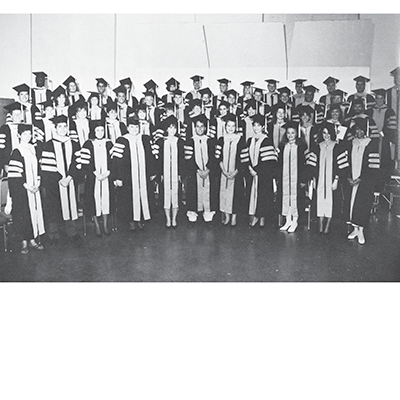
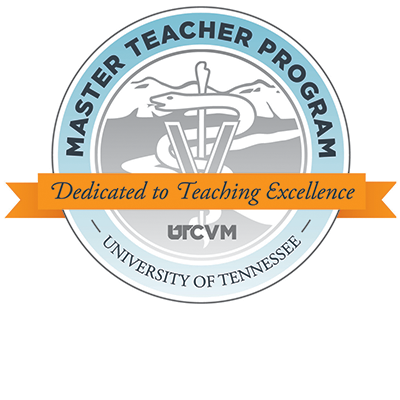

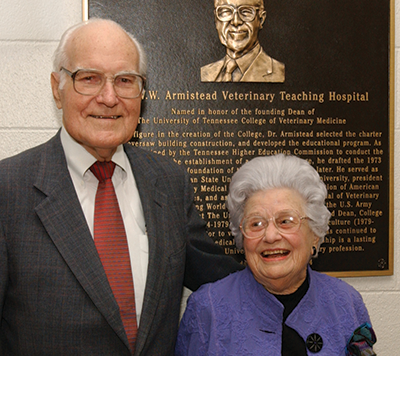
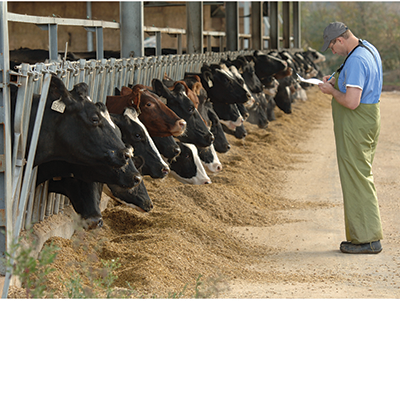
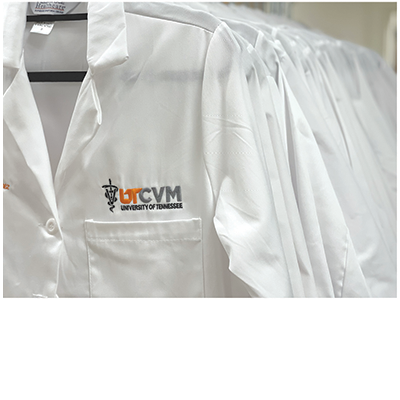
UTCVM Historical Events in September
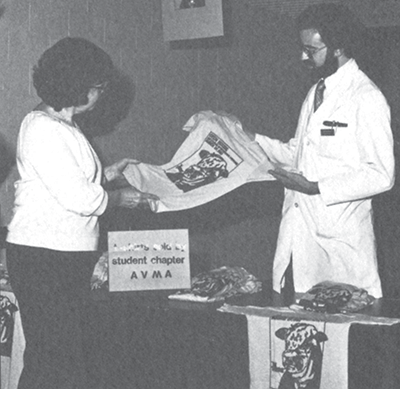
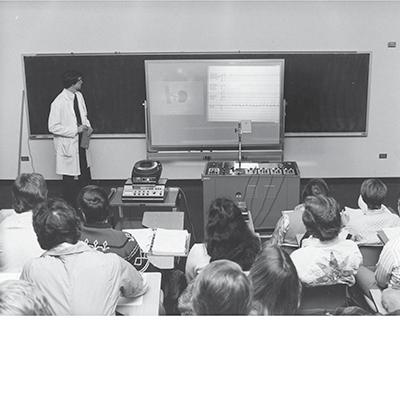
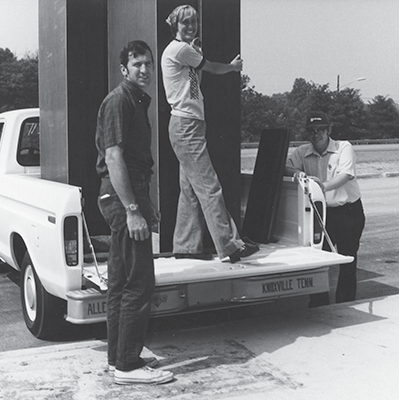
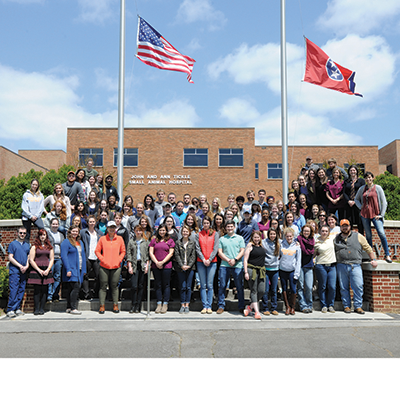
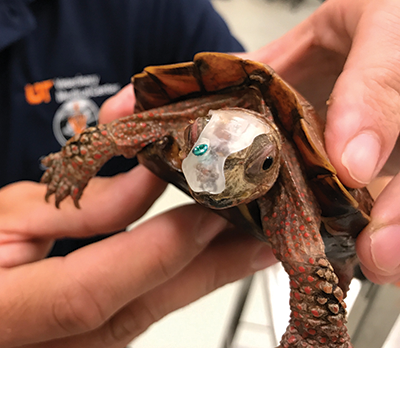
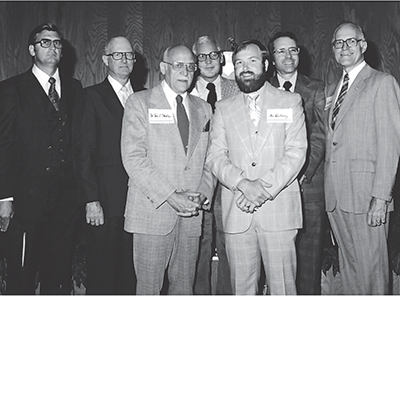
On September 26, 2024, Hurricane Helene slammed into Florida’s coast and then inundated East Tennessee and Western North Carolina with unprecedented rainfall, leading to massive flooding. The Tennessee Department of Agriculture called on UTCVM to spearhead the effort to collect animal-related supplies for affected communities in Carter, Cocke, Greene, Hamblen, Hawkins, Johnson, Unicoi, and Washington counties. A few days later the college’s mobile spay/neuter unit and one of its large animal ambulatory trucks were deployed to Elizabethton, Tennessee.
“Hurricane Helene has impacted the people and animals of our communities greatly. Staff, students, friends, neighbors, and clients have all suffered life-changing losses, and our vet school community grieves with all of those impacted,” said Paul Plummer, UTCVM dean. “Tennessee pet owners and farmers care deeply about assuring the health and welfare of their animals, and we are honored to partner with them in that mission.”
Veterinary students gathered over five thousand items for people and animals, an estimated thirty-thousand pounds of pet food, livestock feed, and hay were donated and delivered to communities, and faculty, staff, and students treated almost two hundred animals in Elizabethton. HABIT volunteer teams visited with those impacted including Spanish-speaking bereaved families as they waited in line to speak with the Mexican consulate in Erwin, Tennessee.
“Providing veterinary services for sick or injured pets is an important part of the recovery from Hurricane Helene,” said Dr. Becky Debolt, clinical associate professor of shelter medicine at UTCVM. “Pets are an important part of our lives, and we hope our work helps strengthen the human-animal bond in these challenging times.”
It is not the first time UTCVM has stepped up to help during a natural disaster. In November 2016, ferocious fires ravaged the Sevier County mountains when wind gusts over 60 mph carried flames throughout the drought-stricken Great Smoky Mountains National Park. Fourteen lives were lost, thousands of acres burned, and nearly $1 billion in insurance claims filed. The Sevier County Humane Society triaged animals at the fairgrounds with the help of the local veterinary community. The most serious cases were sent to the veterinary medical center at the UT College of Veterinary Medicine.
A burned orange tabby in critical condition with bones exposed on all four limbs was one of 22 animals (19 cats, 1 dog and 2 pigs) brought to UT for treatment. Ultimately a Facebook post helped identify his owner, Katrina Cannon. When Cannon and her family opened the door to flee their burning home, Topper, their orange tabby cat, bolted into the woods. “It was like driving through the streets of hell,” Cannon says of the family’s escape. They had lost everything and didn’t expect to see their cat again: a microchip with an old name and a Facebook post led to their reunion.
Other work done by CVM during fire
- Human Animal Bond in Tennessee (HABIT) volunteer teams with psychological first-aid certification provided daily animal-assisted therapy at the Red Cross shelter.
- Students, faculty, and staff volunteered at the Sevier County Humane Society.
- Companion Animal Initiative of Tennessee helped coordinate veterinary medical supplies for Sevier County Humane Society and Foster Vols, pairing animals with short-term foster homes.
Caring for the cats was labor intensive and demanded extensive nursing care. Topper’s road to recovery was fraught with setbacks and second-guessing — very little was written in the veterinary literature regarding those types of wounds. Topper became a symbol of hope for the medical teams treating all the animals injured in the fires. He remained in the hospital for a month, most of that time in the ICU, and returned to his new home with the Cannon Family on New Year’s Eve. Cannon was shocked when she brought Topper back to UT to visit the ICU team. “I had no idea so many people were involved with his care and loved him so much. I can’t imagine what he and everyone caring for him went through. They are a Godsend! There aren’t words good enough to say to them or to everyone who donated for medical care. He’s here because of them. I have my baby back because of them. I’m beyond grateful.”
January 7, 2020, Topper passed peacefully in Katrina Cannon’s arms at home surrounded by his family.
UTCVM Historical Events in October
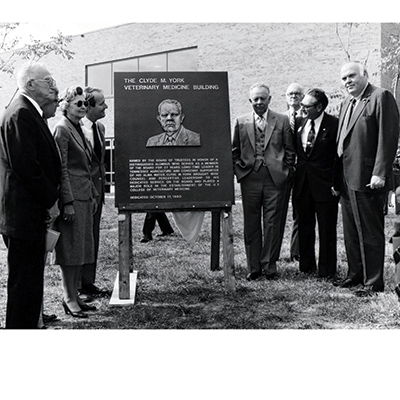
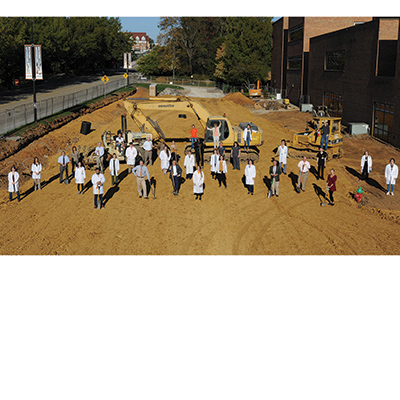
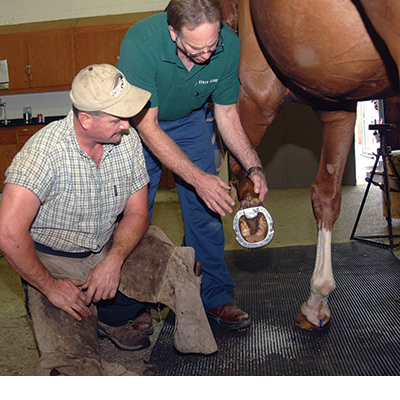
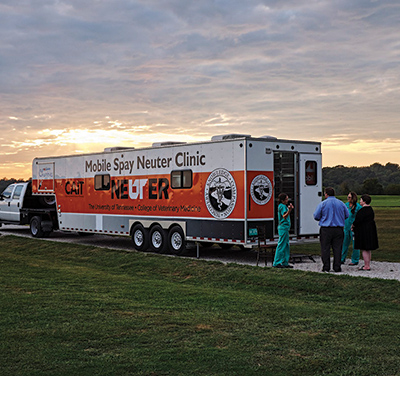
UTCVM Historical Events in November

